Place Value Worksheets
Counting Objects
Grades: Kindergarten
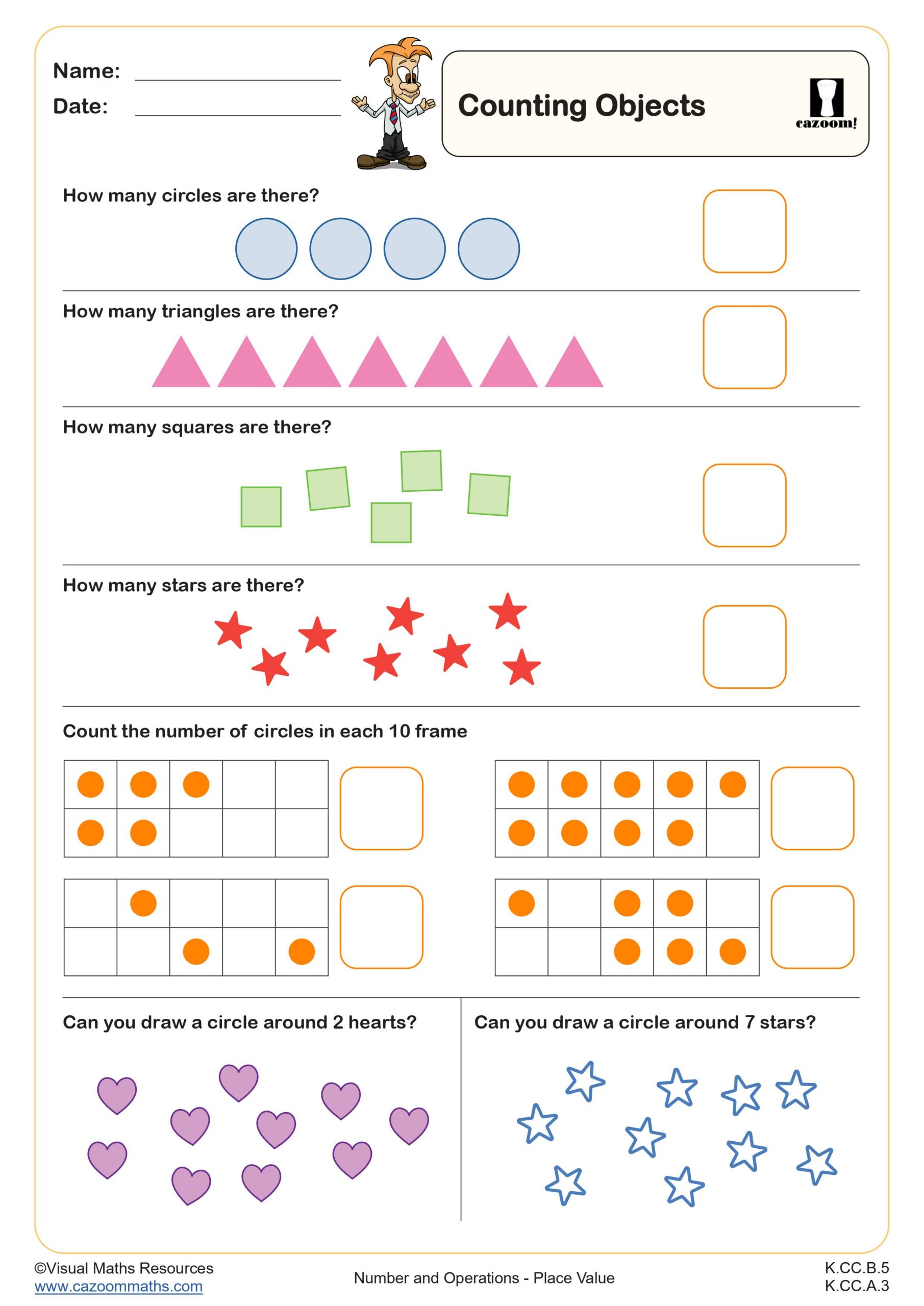
Numerals and Words (up to 10)
Grades: Kindergarten
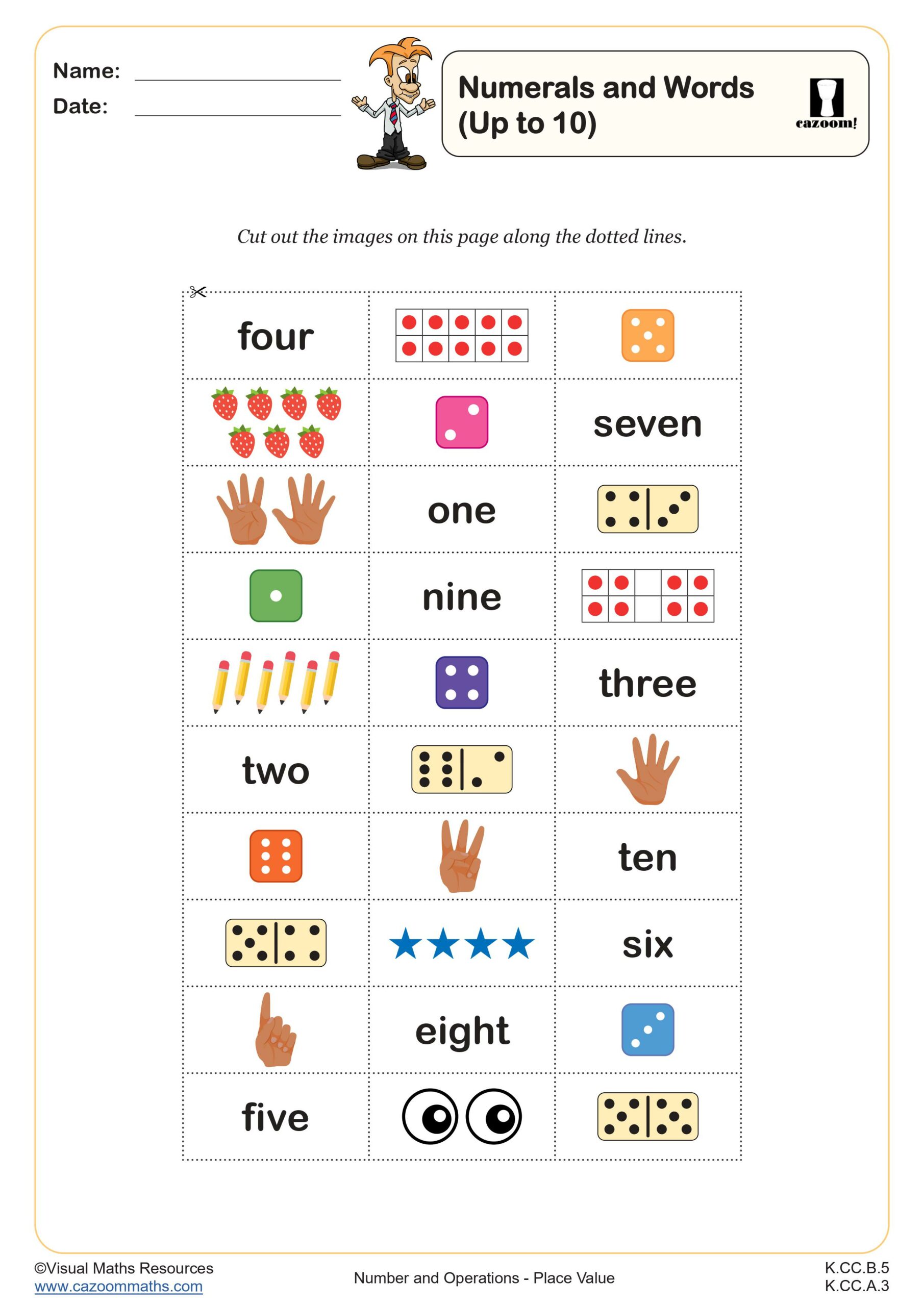
10 More 10 Less
Grades: 1st Grade, 2nd Grade
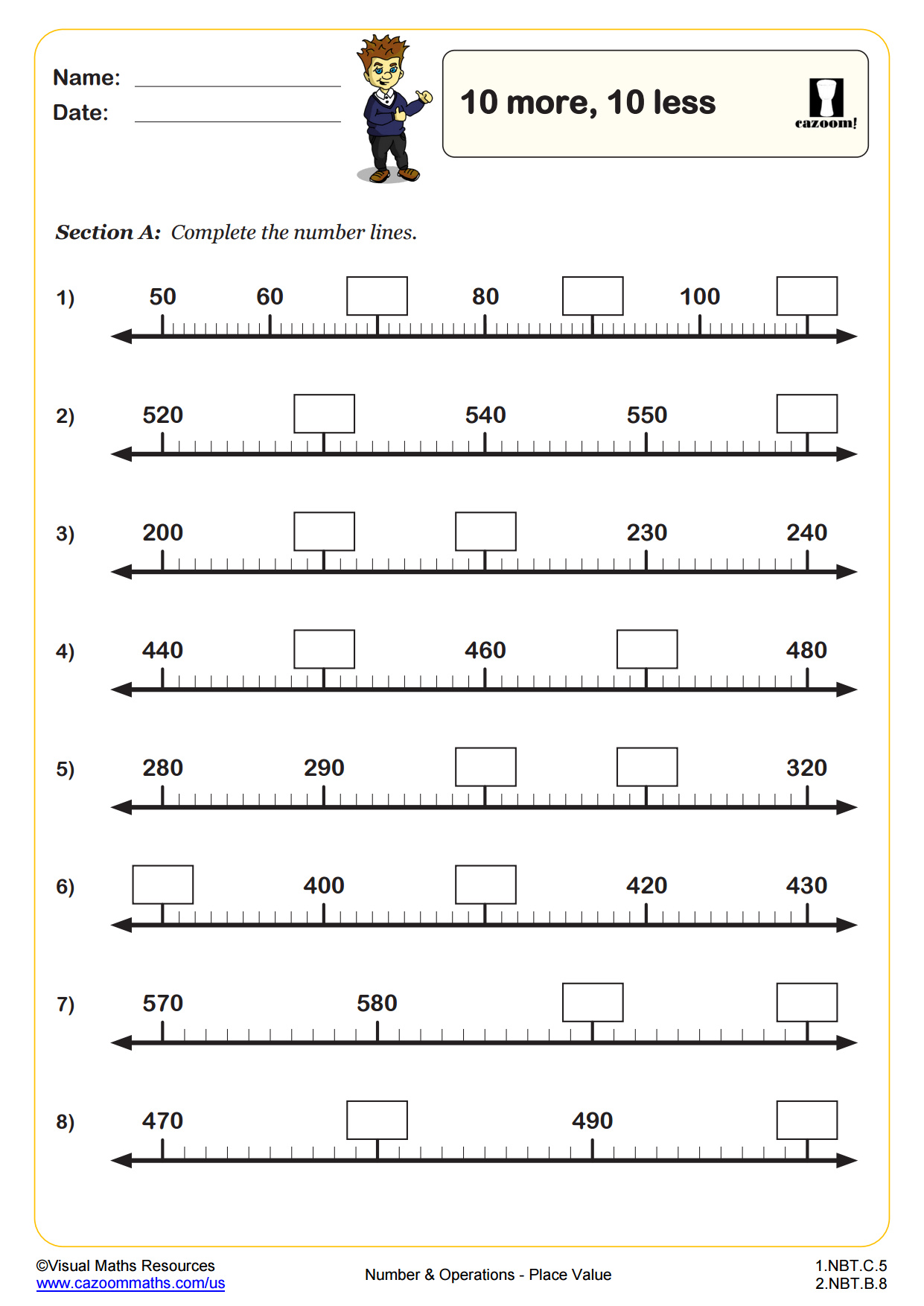
Compare and Order Numbers to 100
Grades: 1st Grade
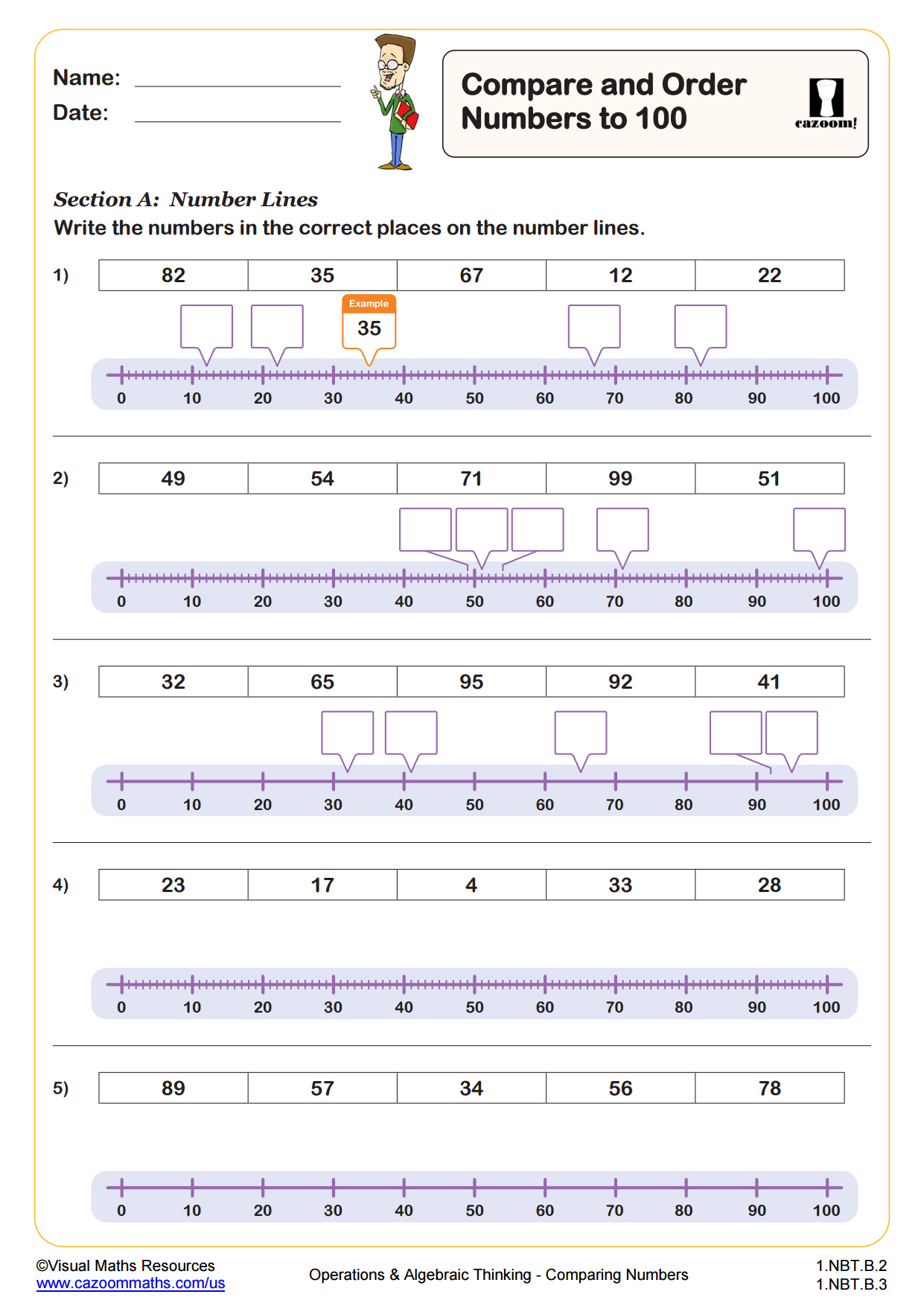
Compare and Order Numbers to 1000
Grades: 1st Grade, 2nd Grade
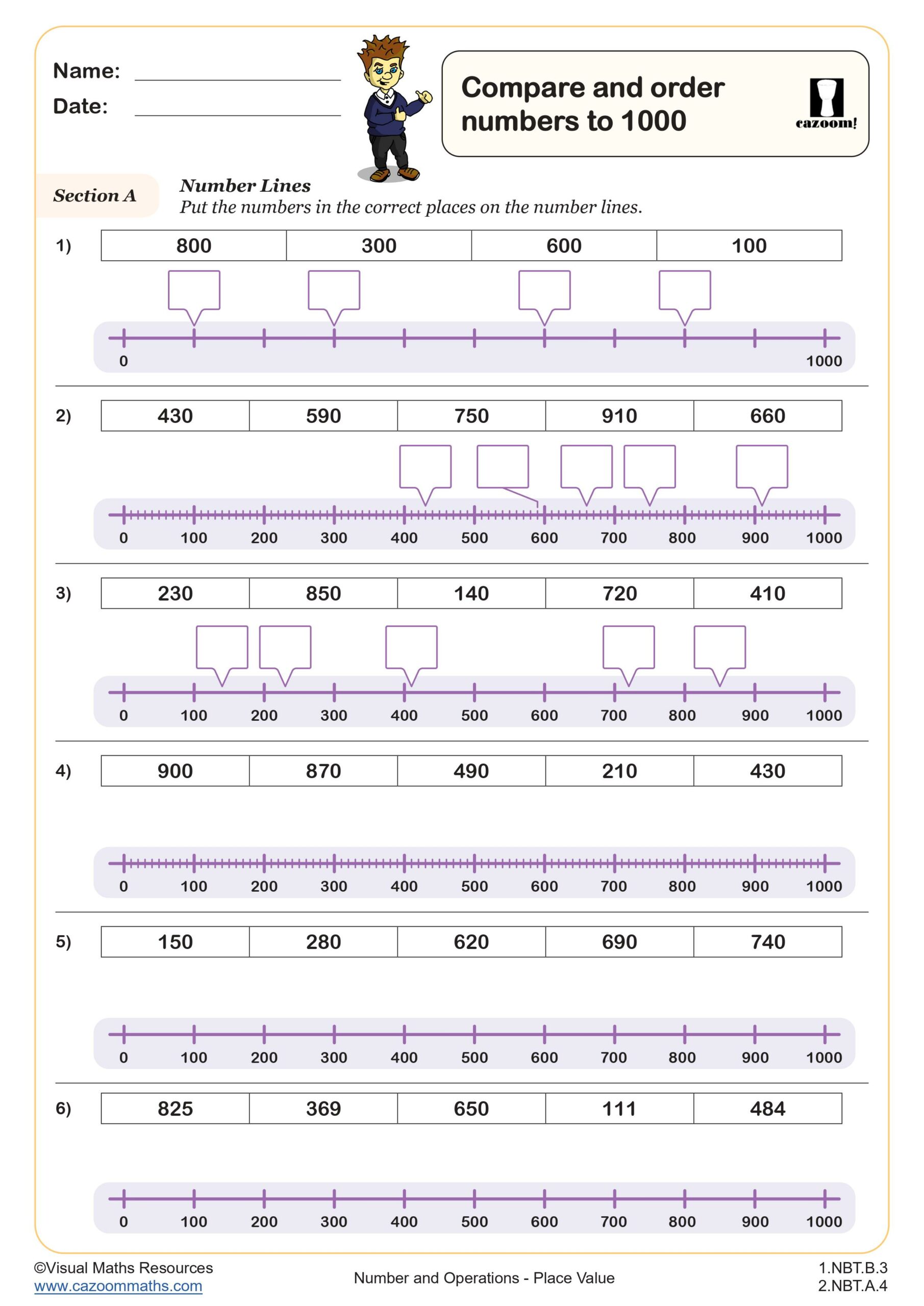
Compare Numbers to 20
Grades: 1st Grade
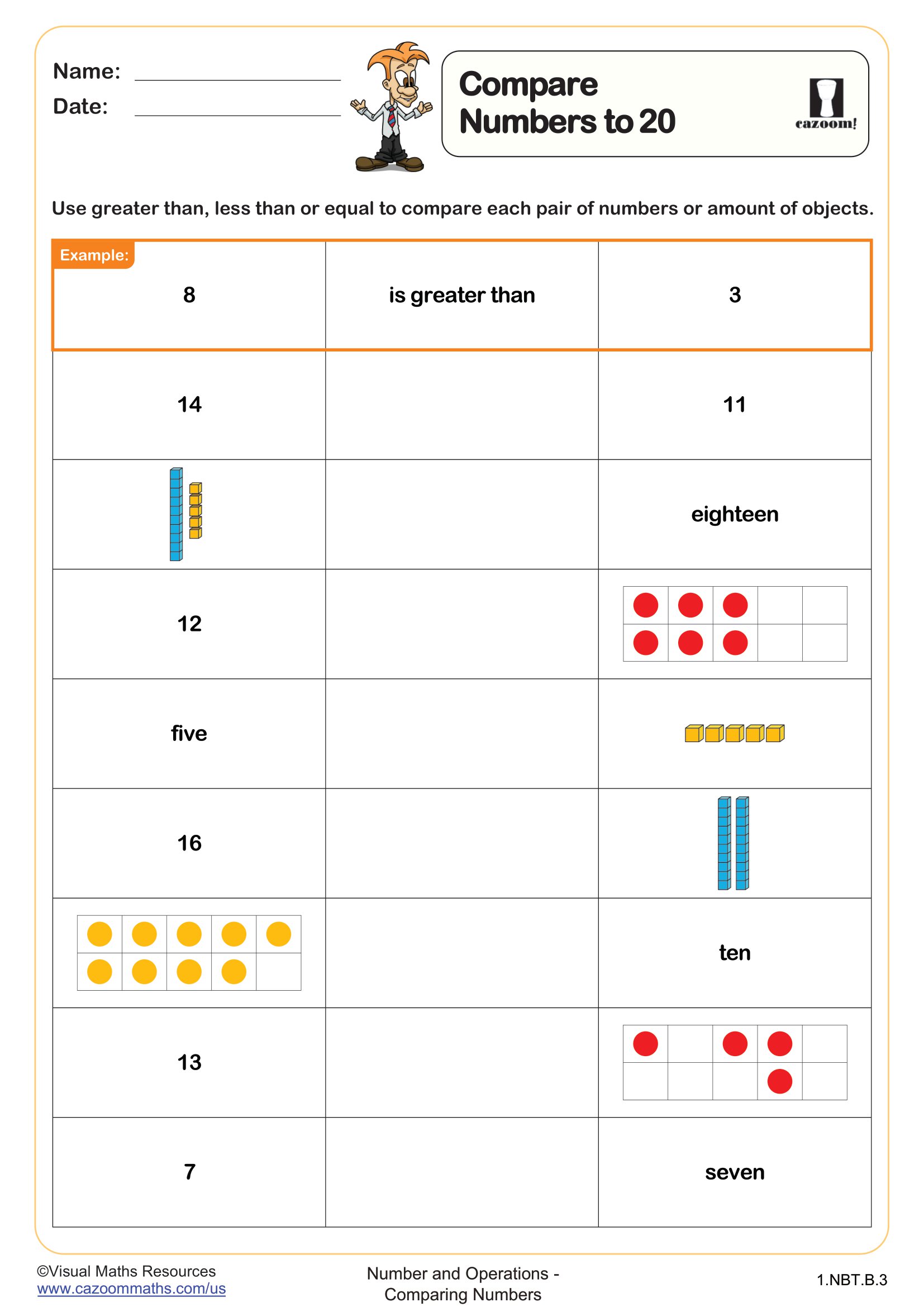
Place Value up to 100 (A)
Grades: 1st Grade, 2nd Grade
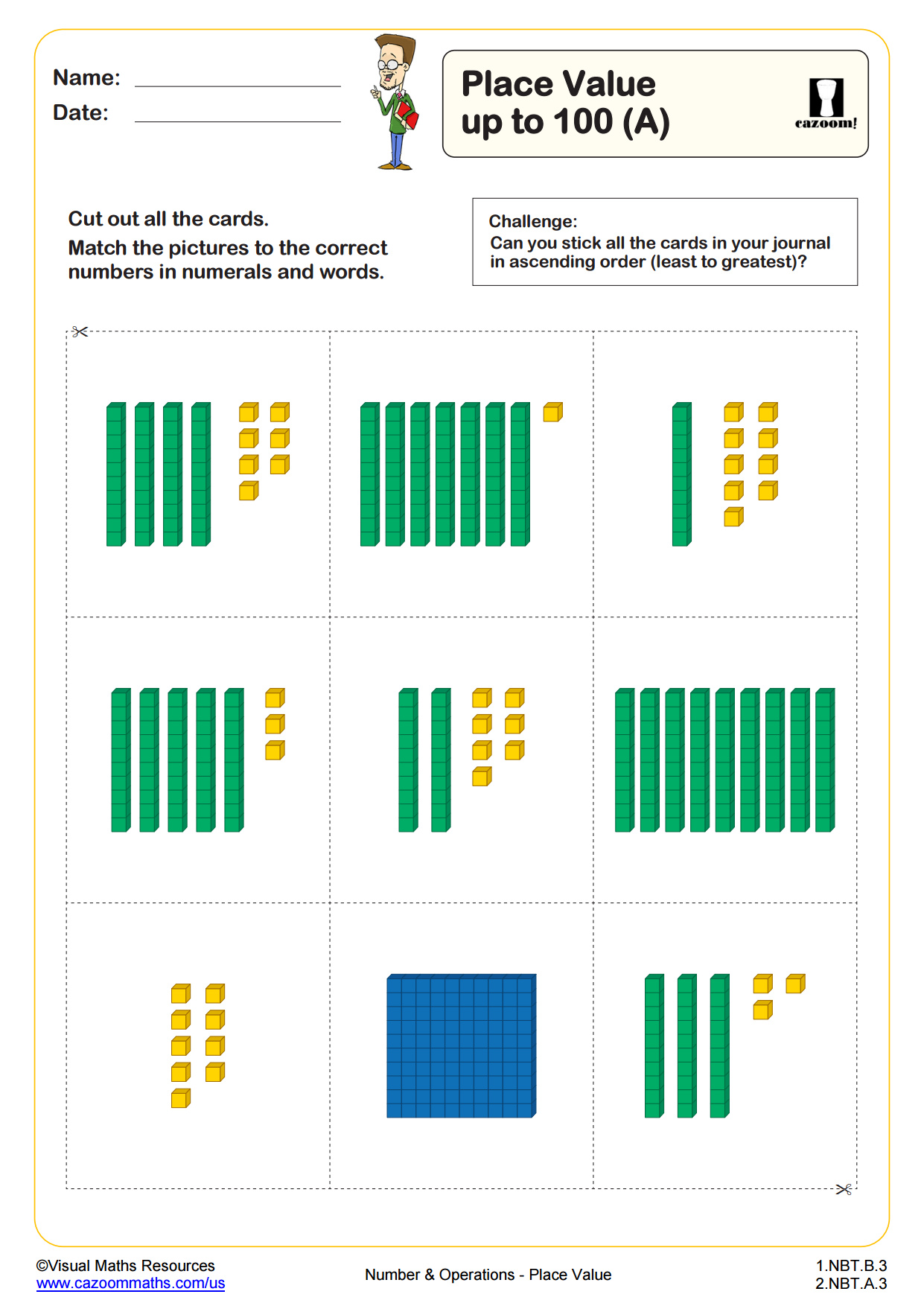
Place Value up to 100 (B)
Grades: 1st Grade, 2nd Grade
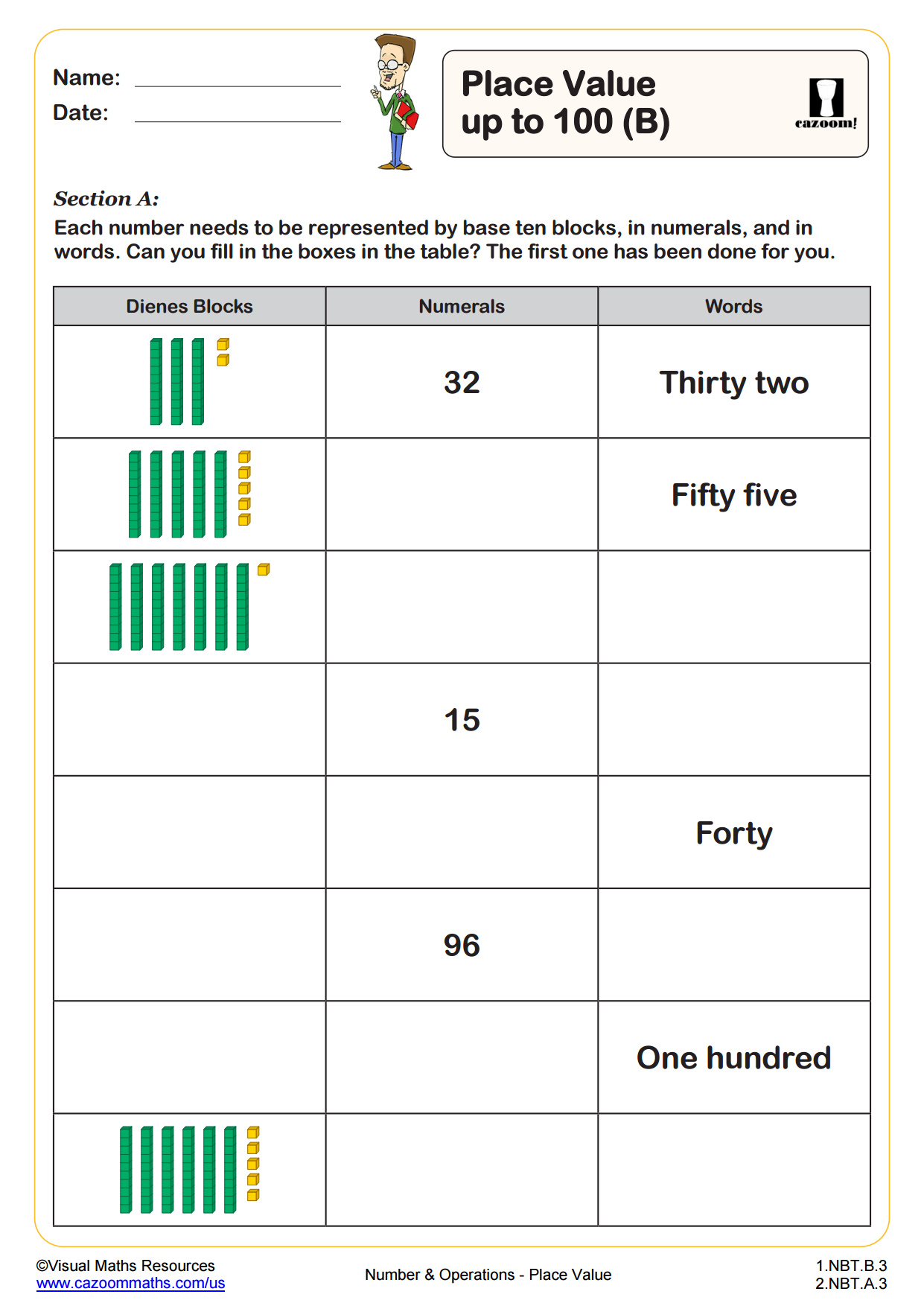
The Number Line (to 10)
Grades: 1st Grade
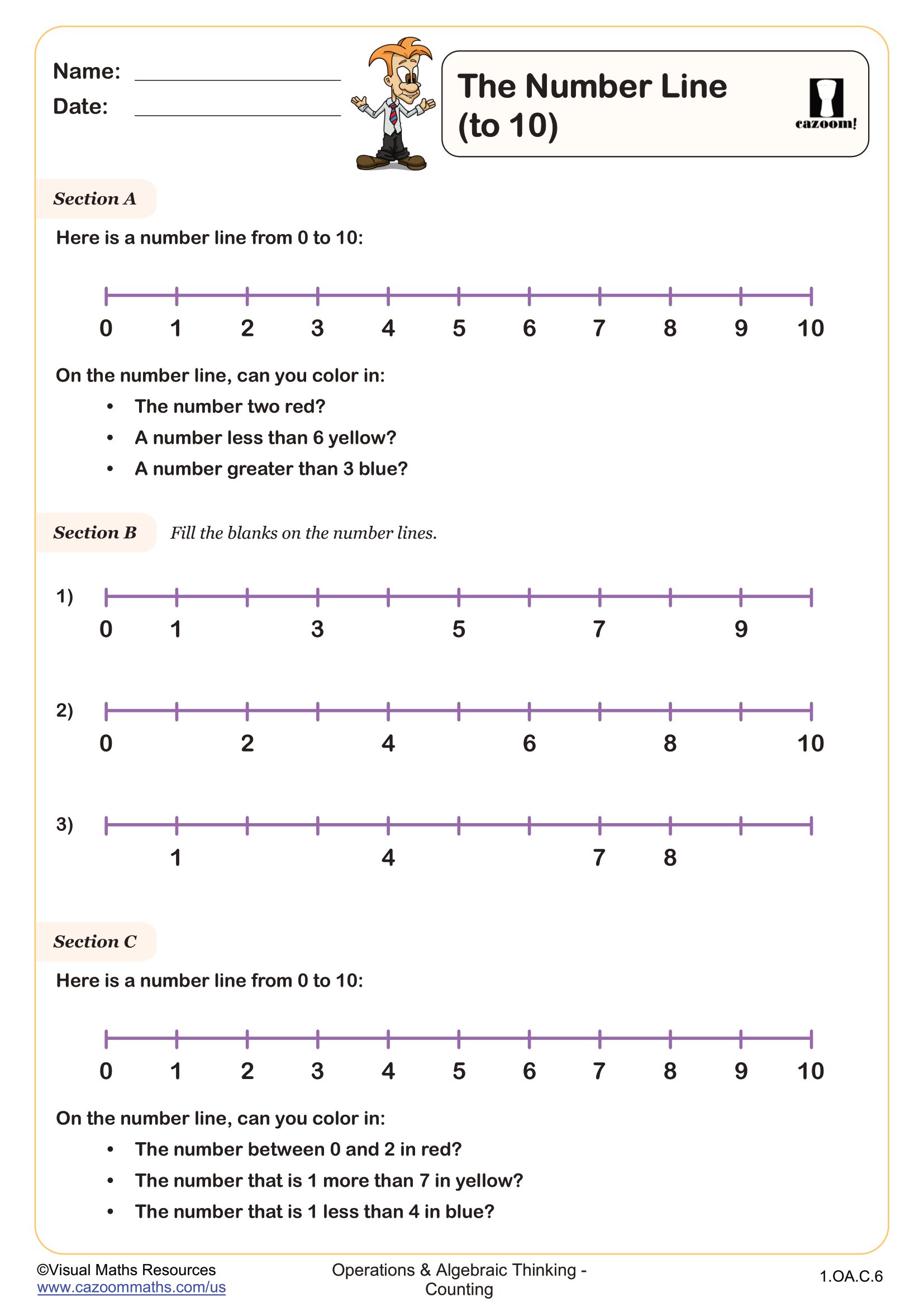
The Number Line (to 20)
Grades: 1st Grade, 2nd Grade
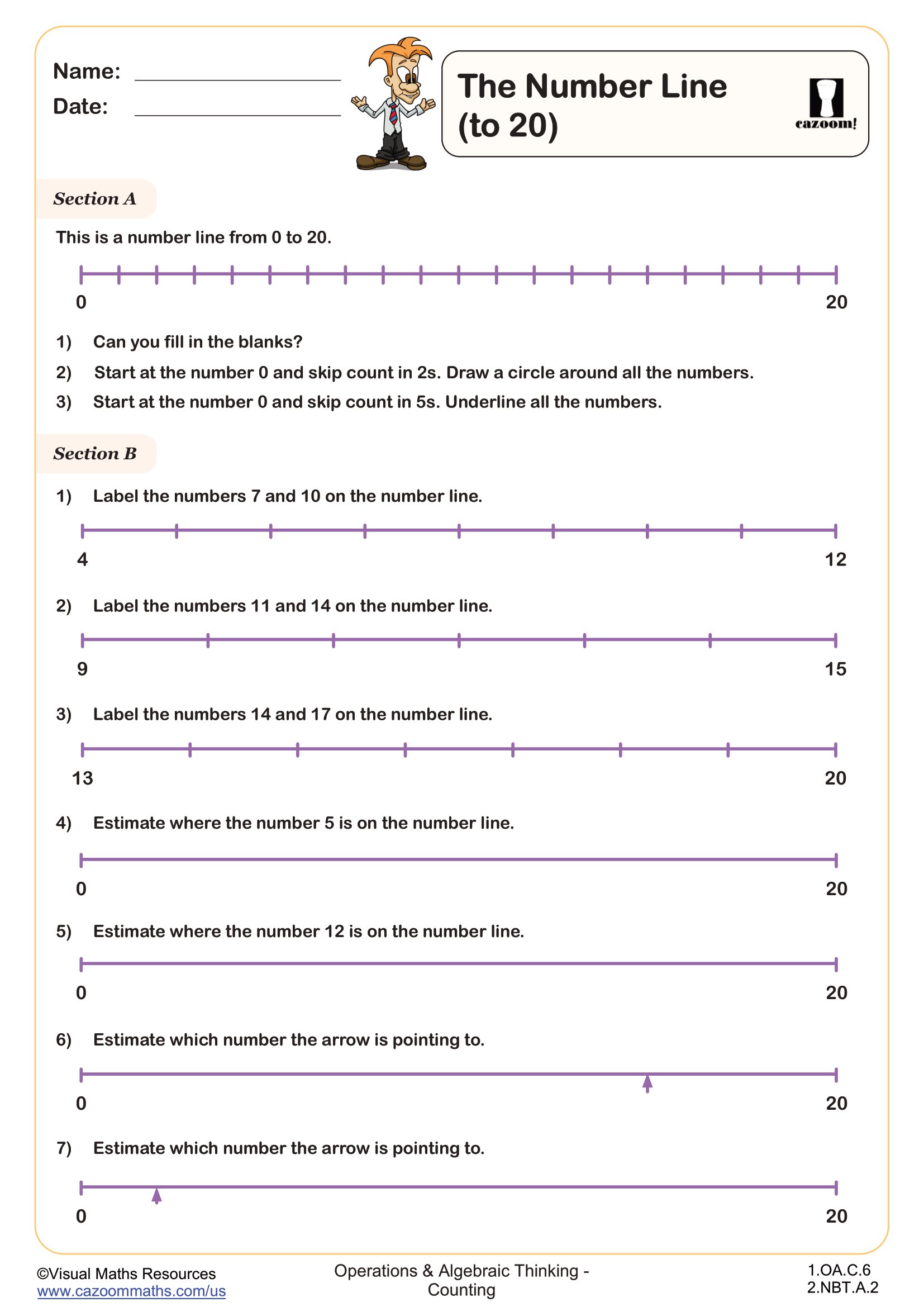
100 More 100 Less
Grades: 2nd Grade
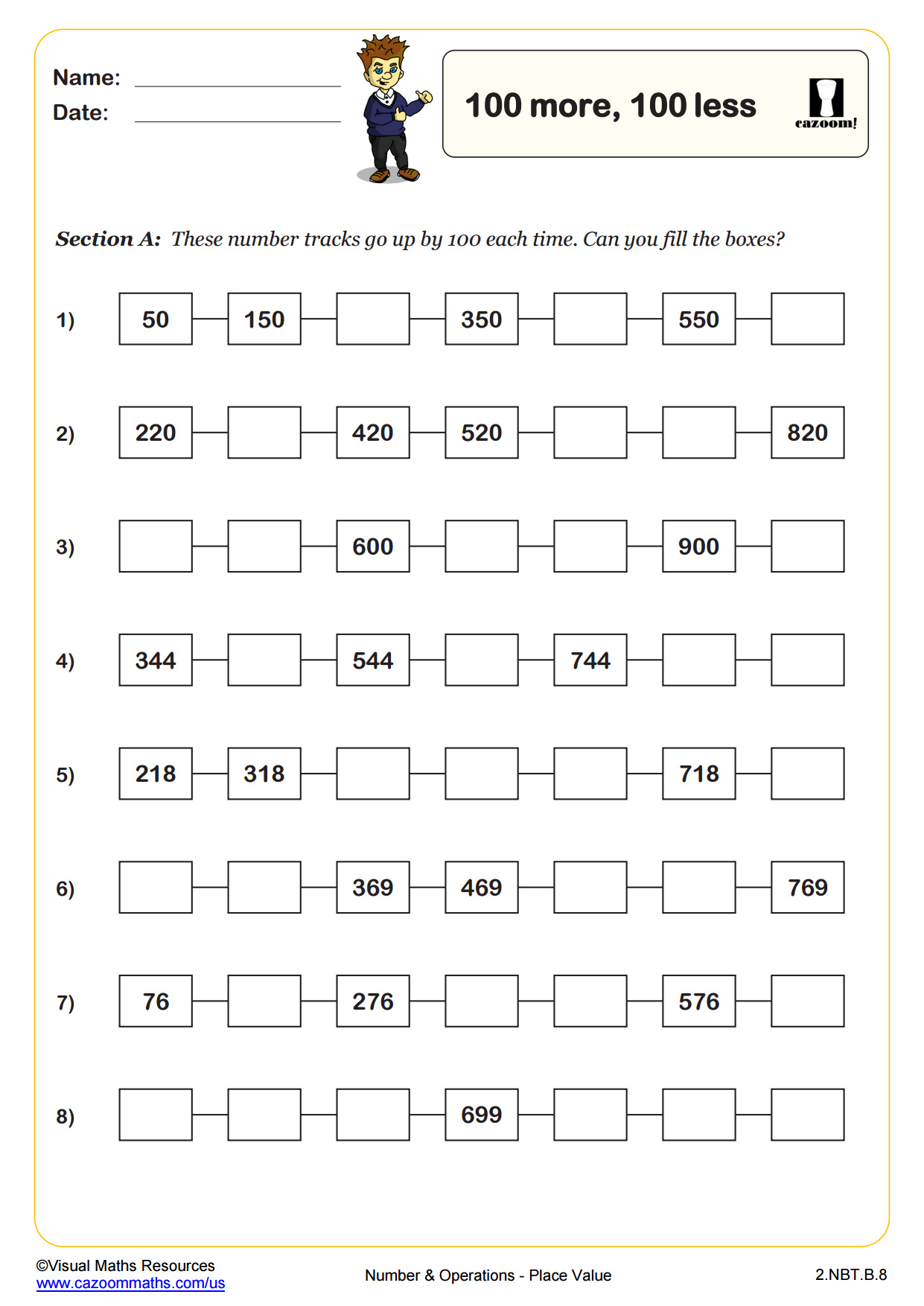
Expanding Numbers to 1,000
Grades: 2nd Grade
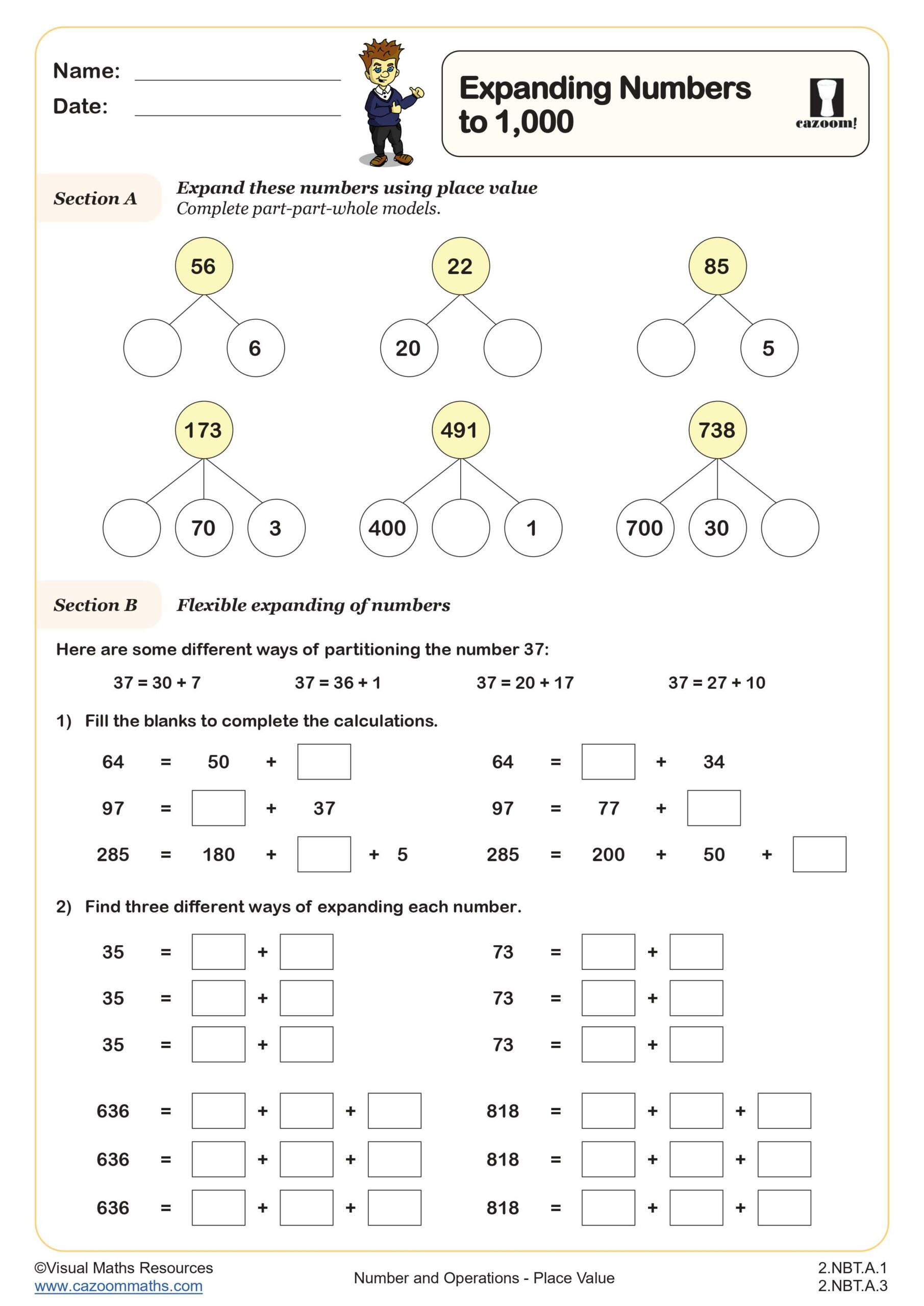
Halloween Place Value Coloring
Grades: 2nd Grade, 5th Grade
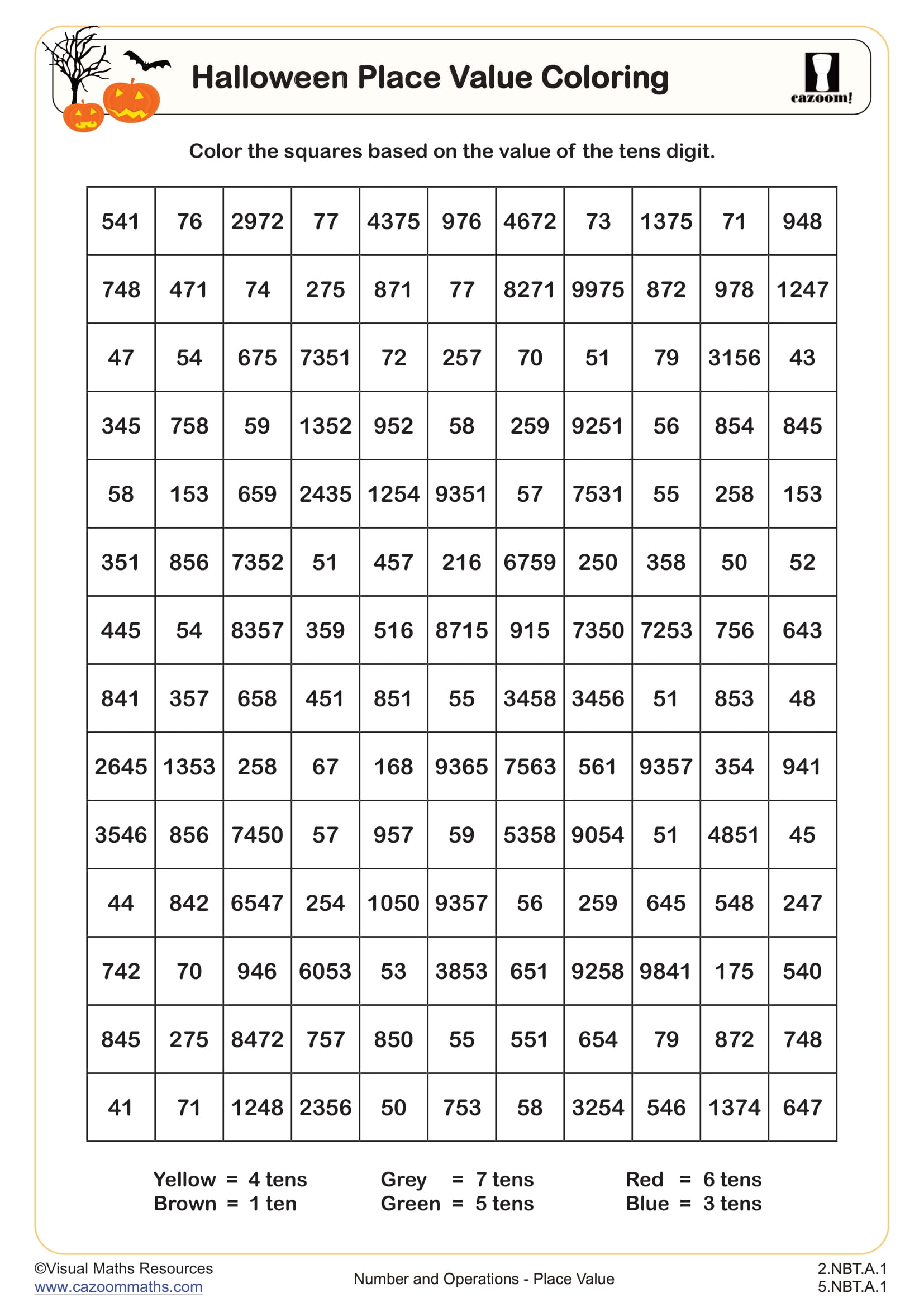
Number Lines to 1,000
Grades: 2nd Grade
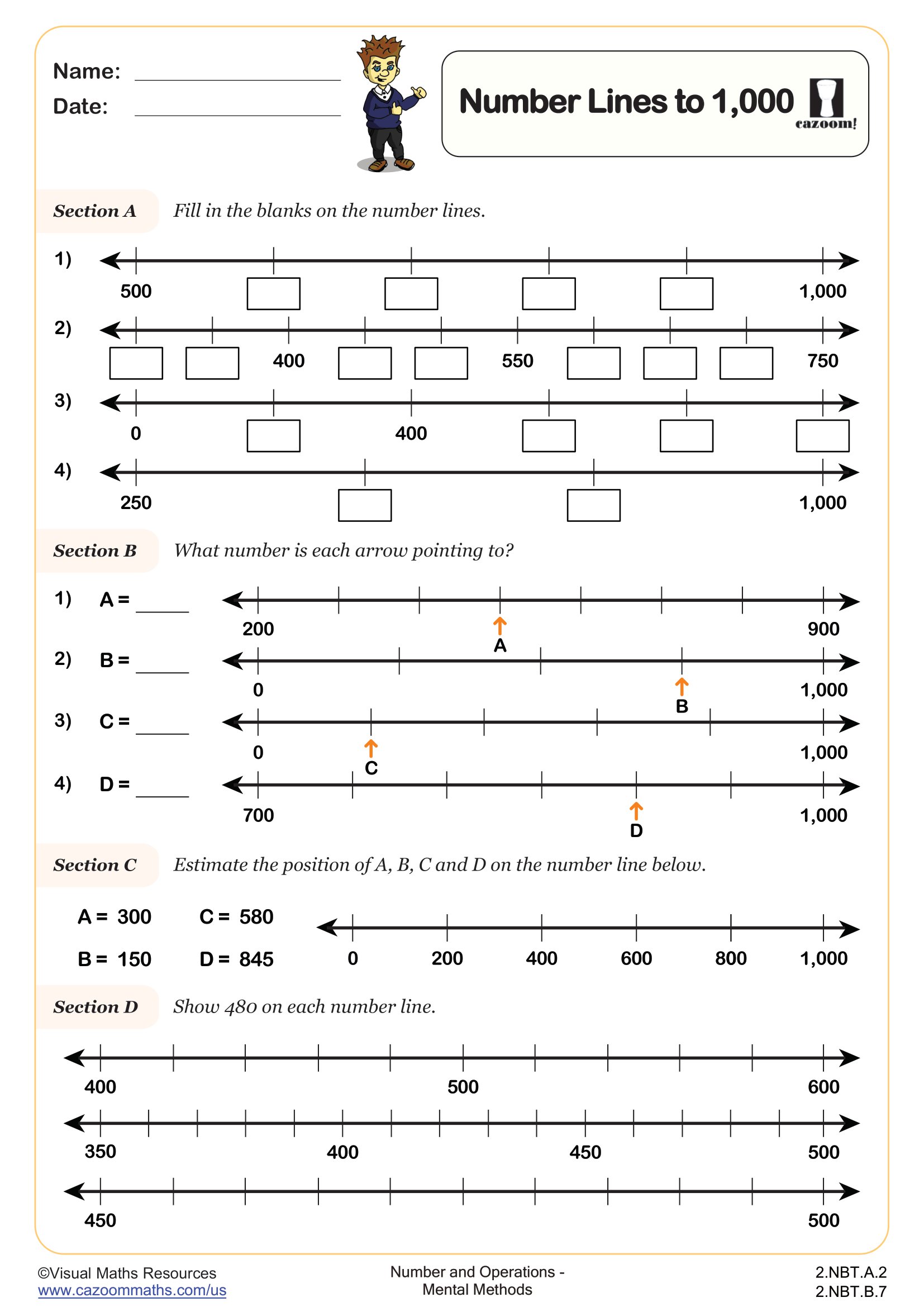
Numerals and Words (up to 100)
Grades: 2nd Grade
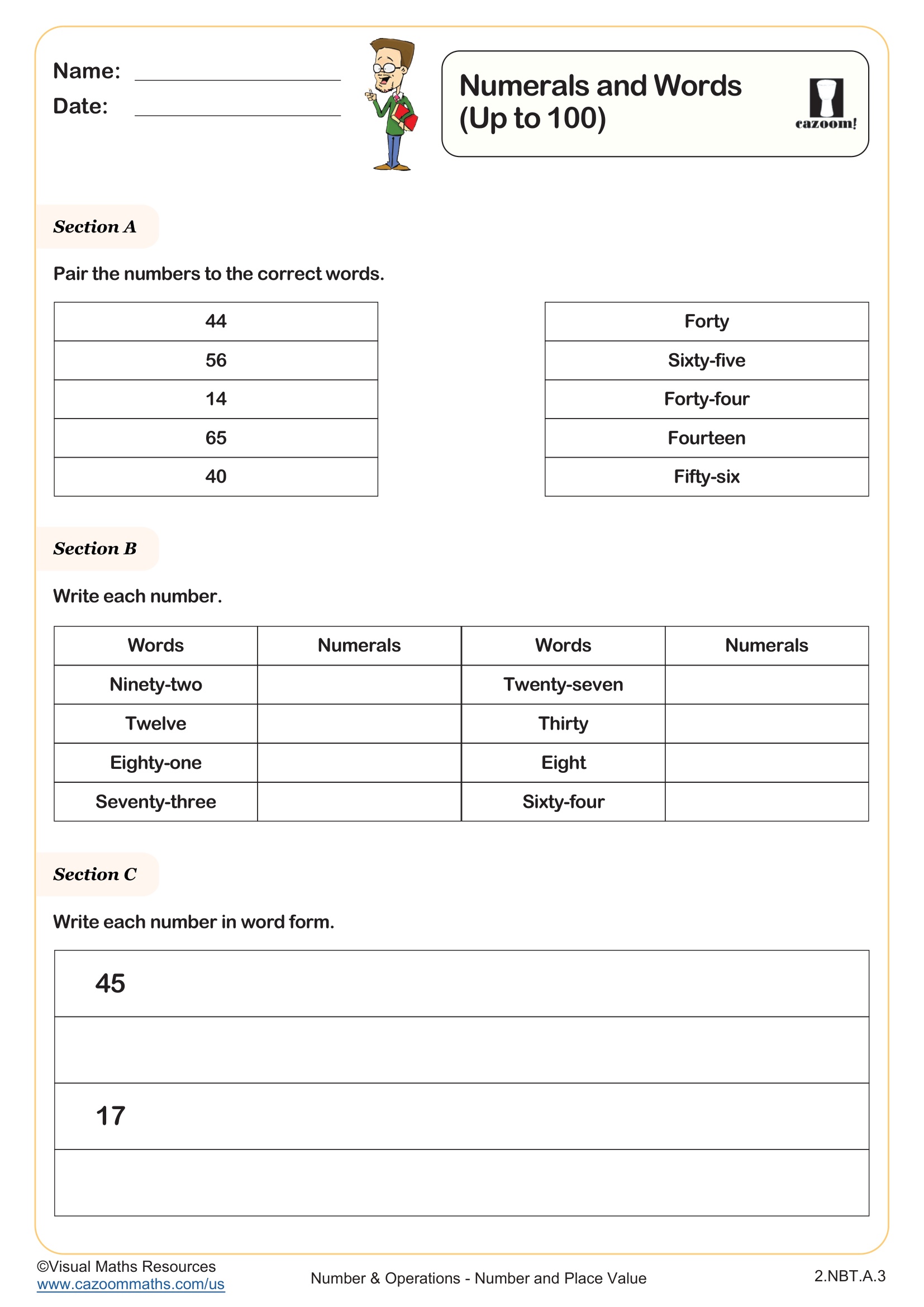
Numerals and Words (up to 20)
Grades: 2nd Grade
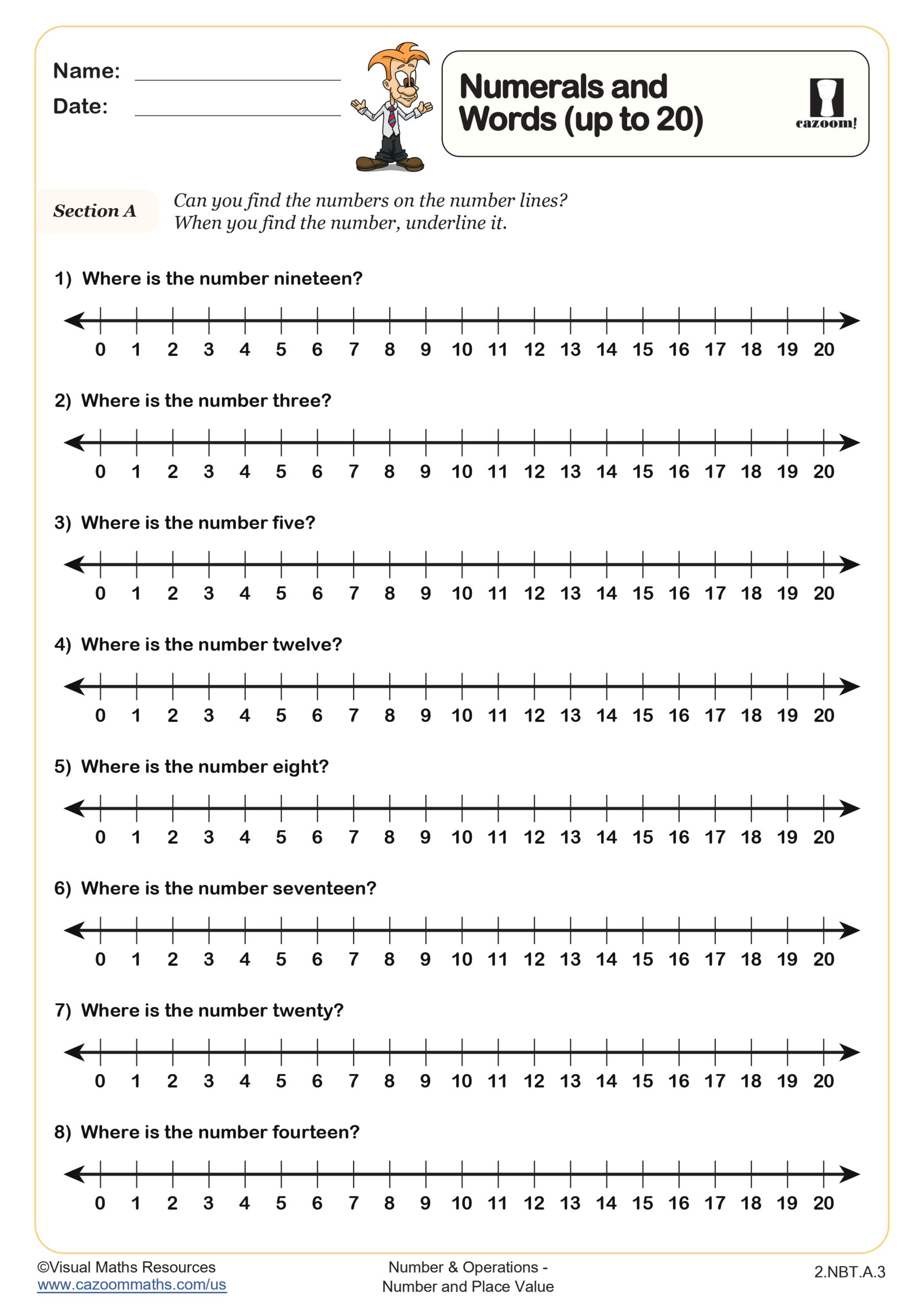
Place Value up to 1000
Grades: 2nd Grade
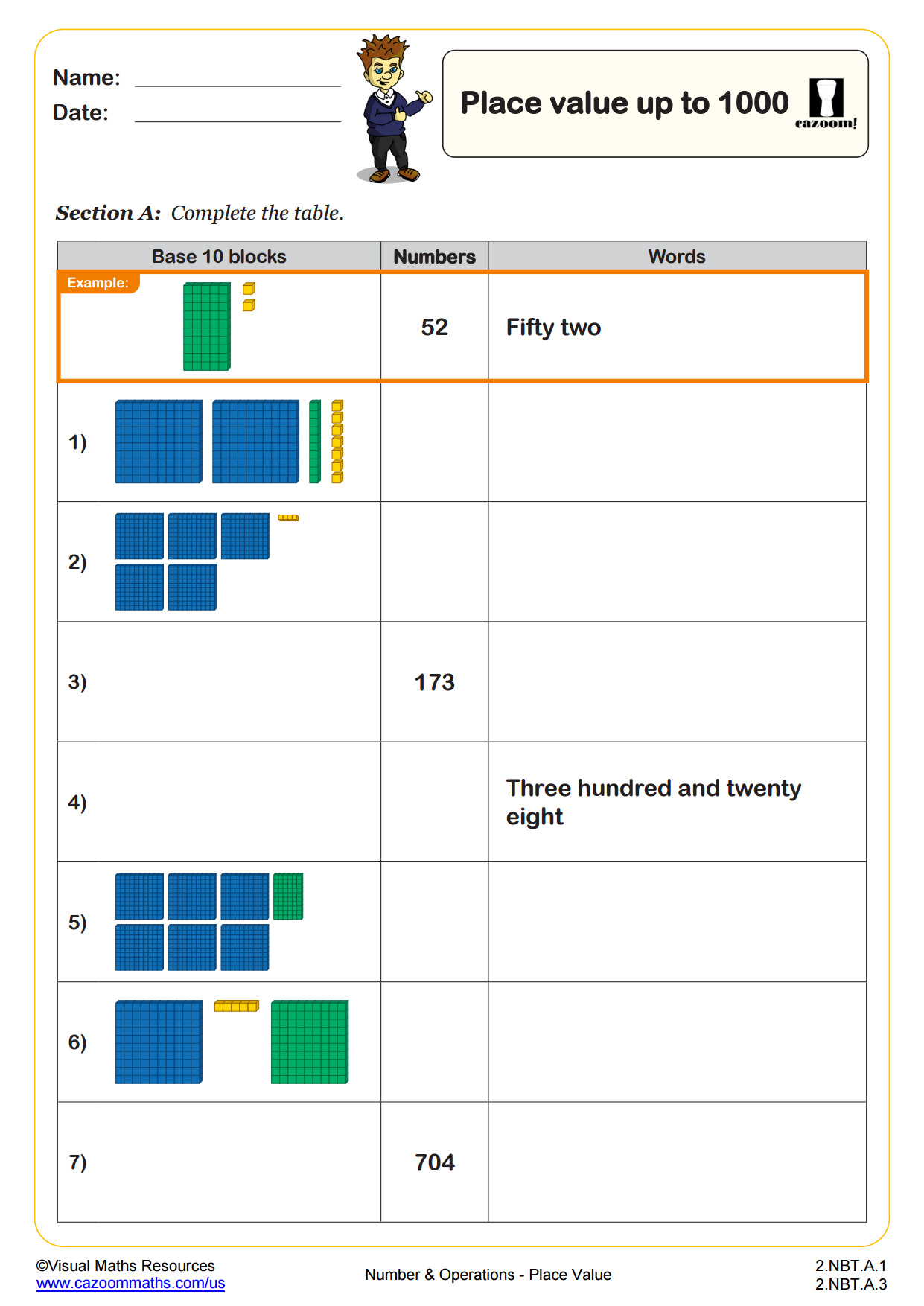
Rounding Numbers to the Nearest 10 Using Number Lines (A)
Grades: 2nd Grade, 3rd Grade
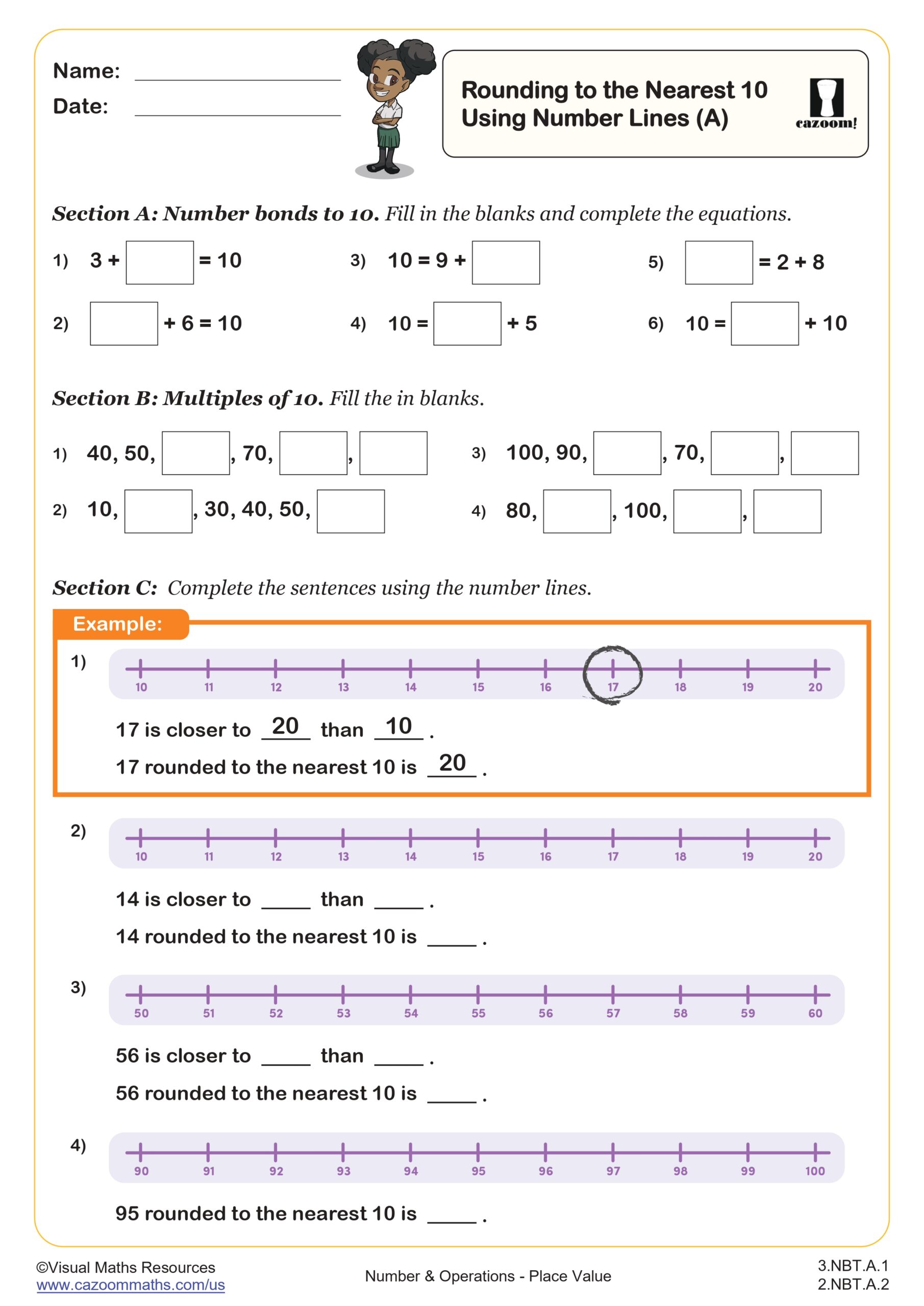
Rounding Numbers to the Nearest 10 Using Number Lines (B)
Grades: 2nd Grade, 3rd Grade
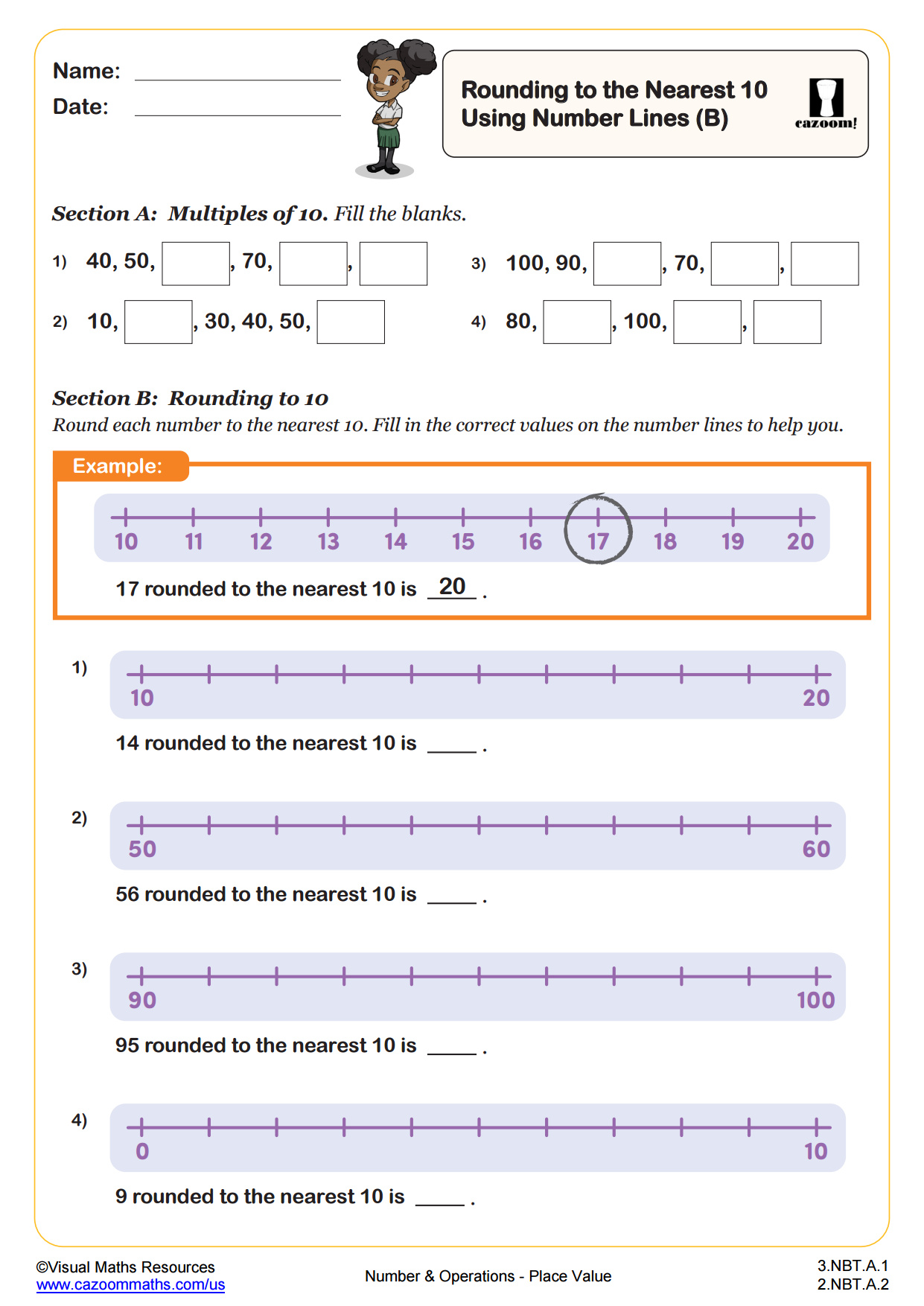
Rounding Numbers to the Nearest 100 Using Number Lines (A)
Grades: 2nd Grade, 3rd Grade
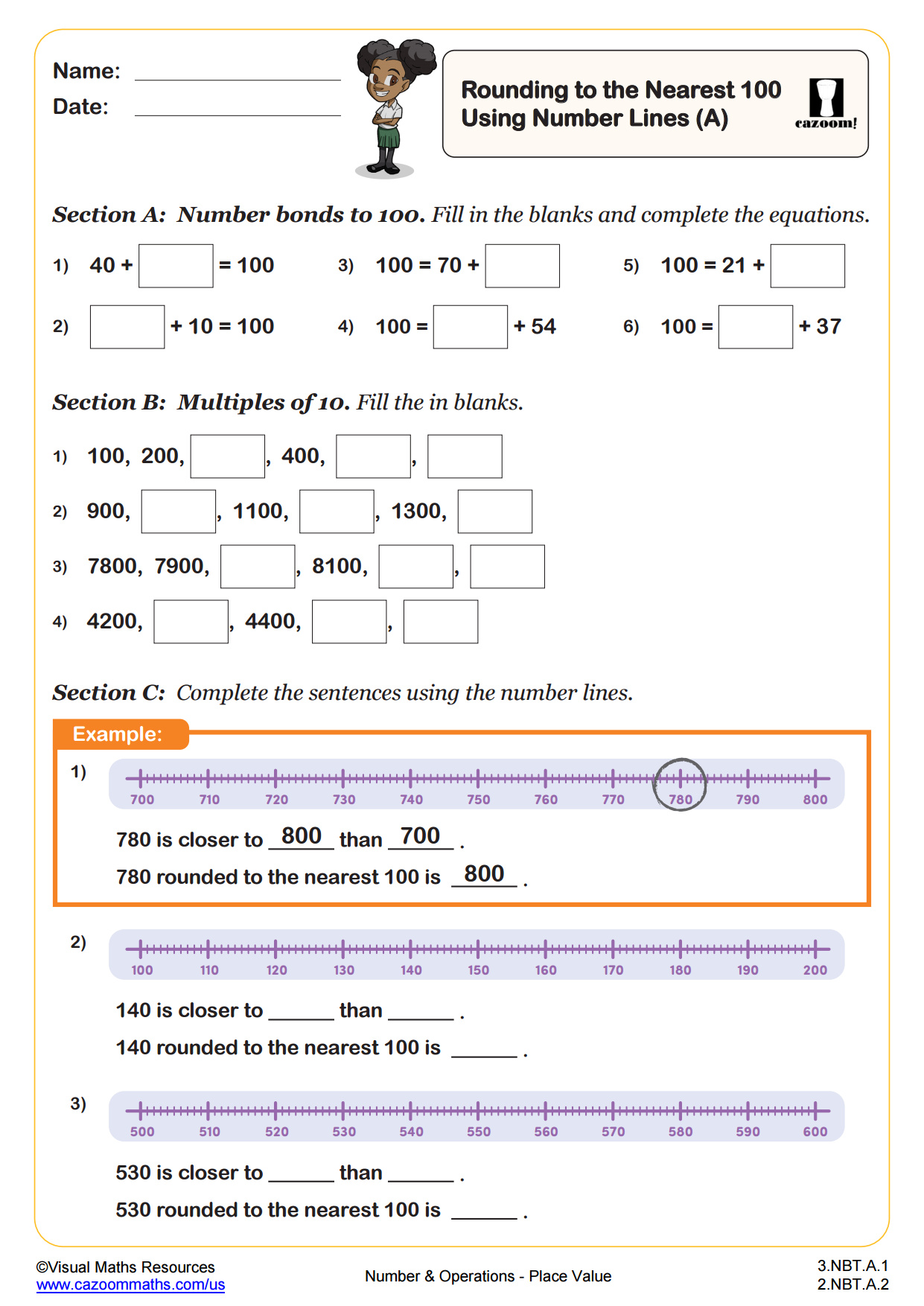
Rounding Numbers to the Nearest 100 Using Number Lines (B)
Grades: 2nd Grade, 3rd Grade
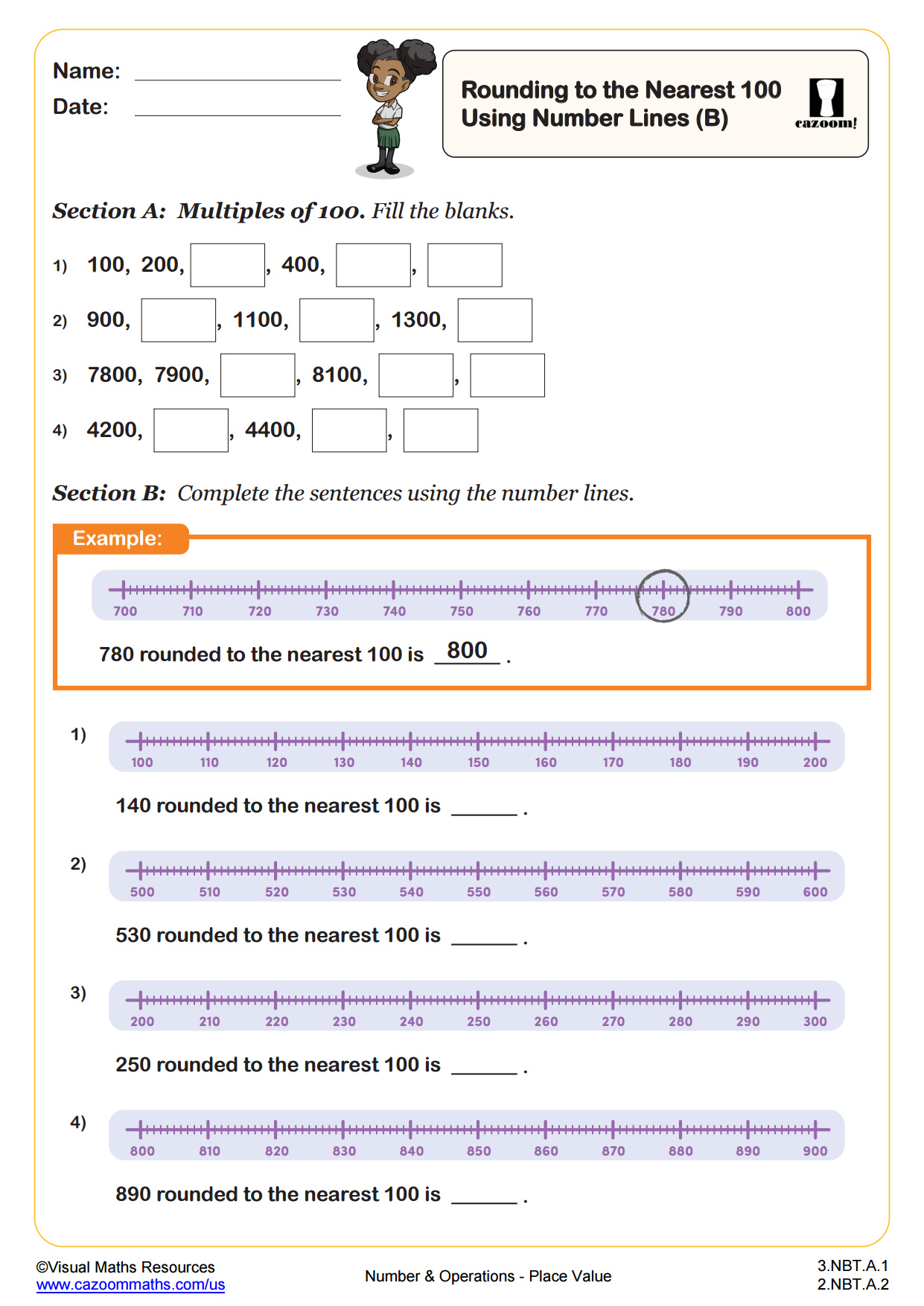
The Number Line to 100
Grades: 2nd Grade
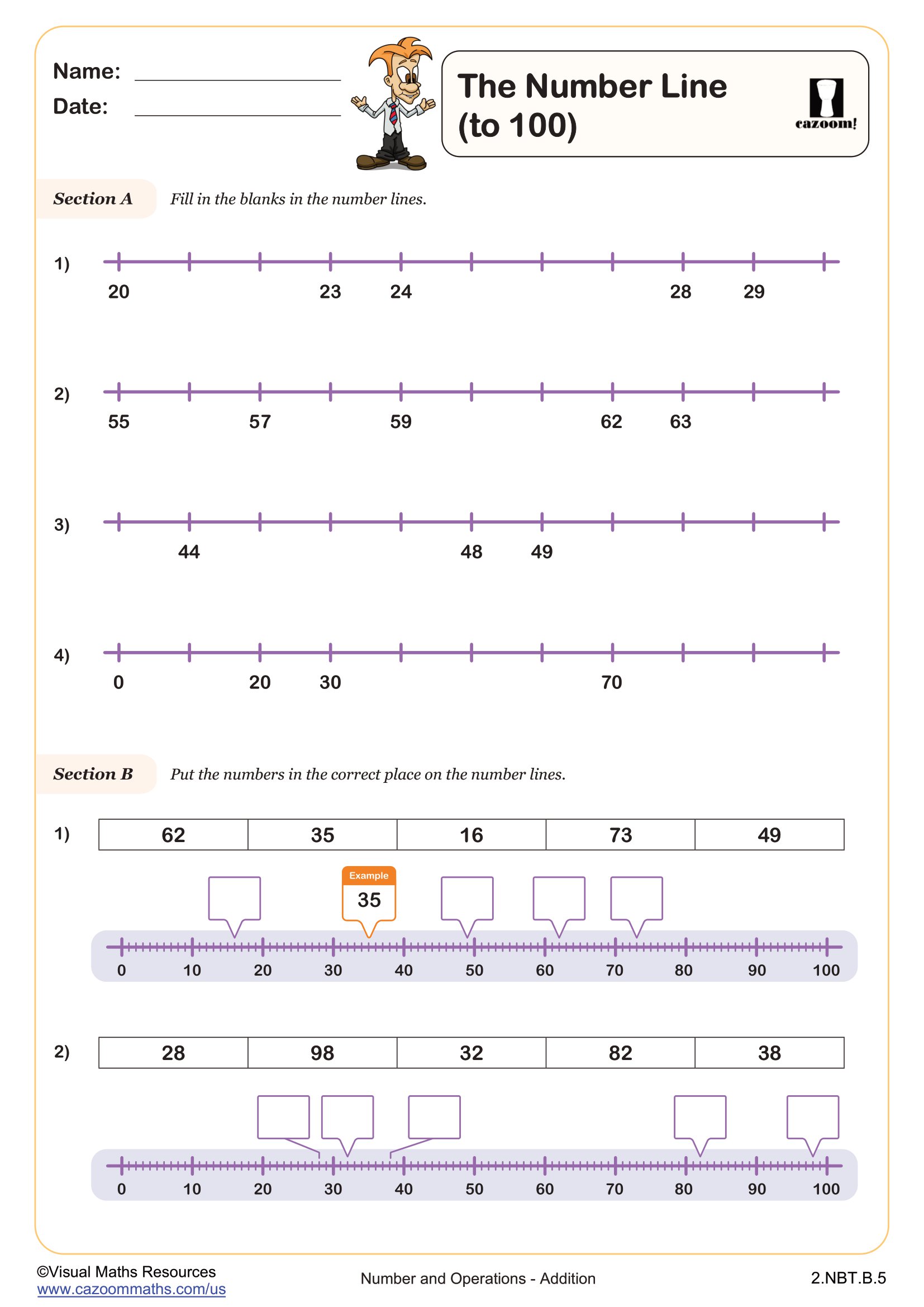
Words and Numerals
Grades: 2nd Grade, 4th Grade
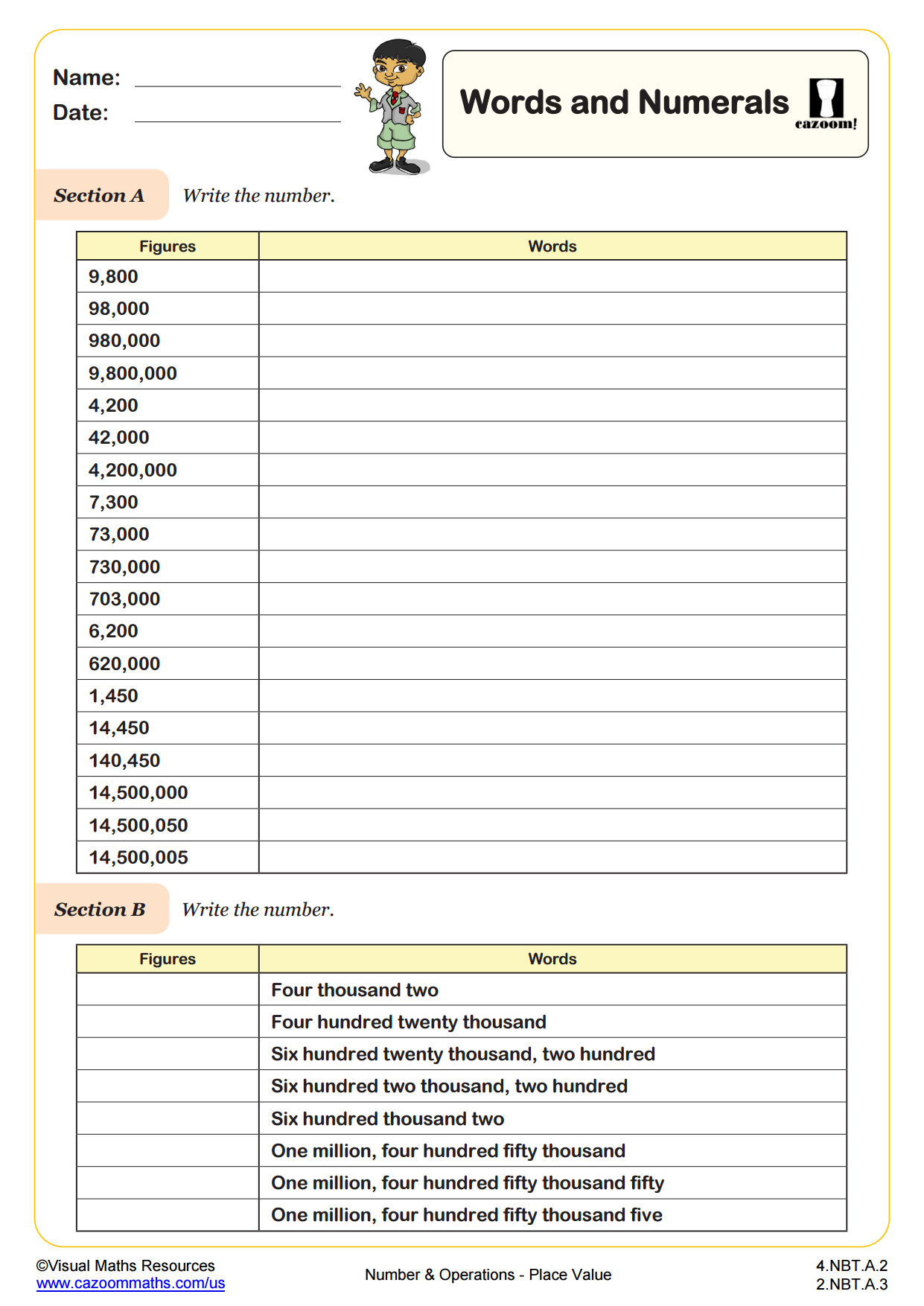
Rounding Numbers to the Nearest 10 Using Number Lines (C)
Grades: 3rd Grade
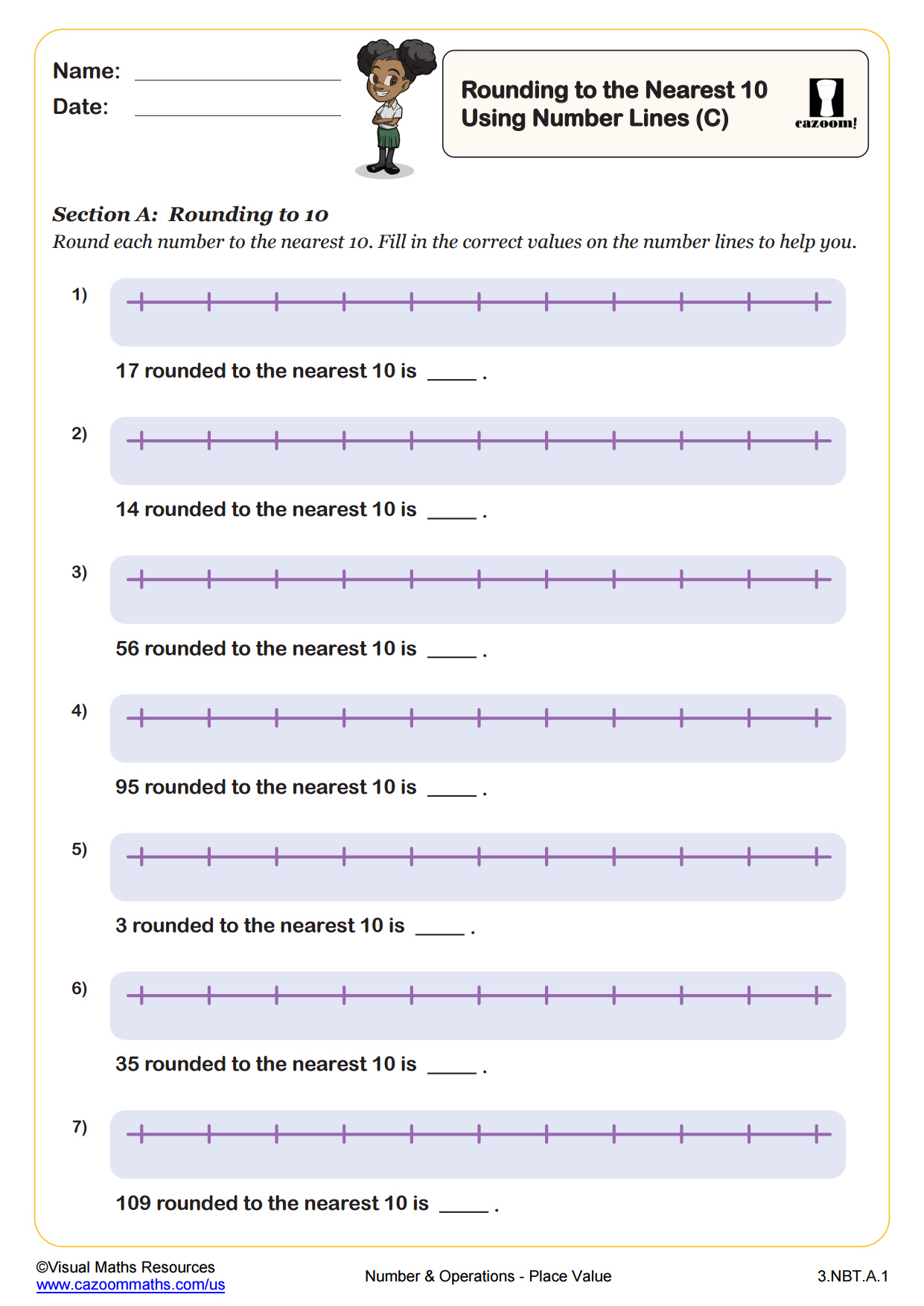
Rounding Numbers to the Nearest 100 Using Number Lines (C)
Grades: 3rd Grade
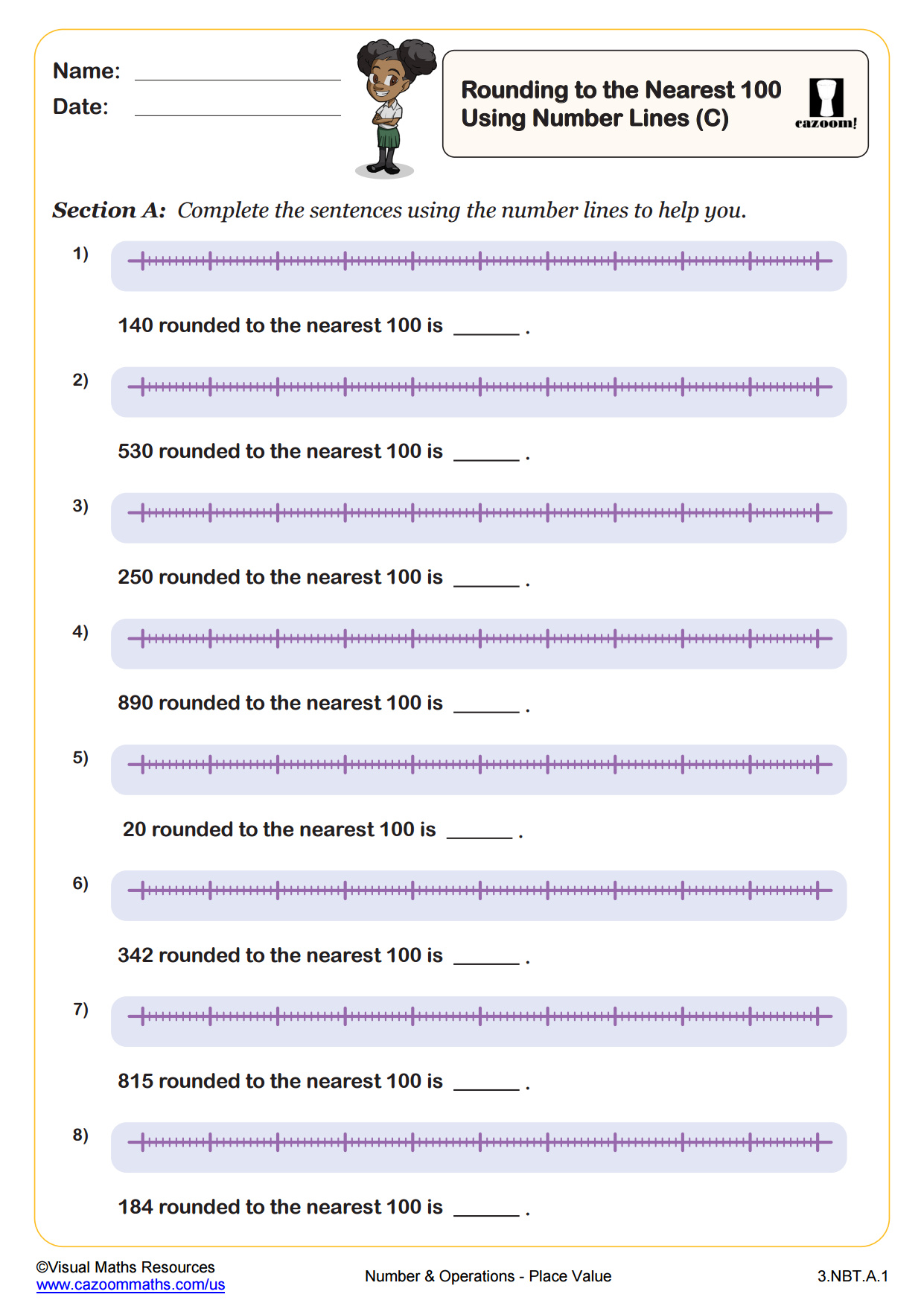
Rounding to the Nearest 100
Grades: 3rd Grade, 4th Grade
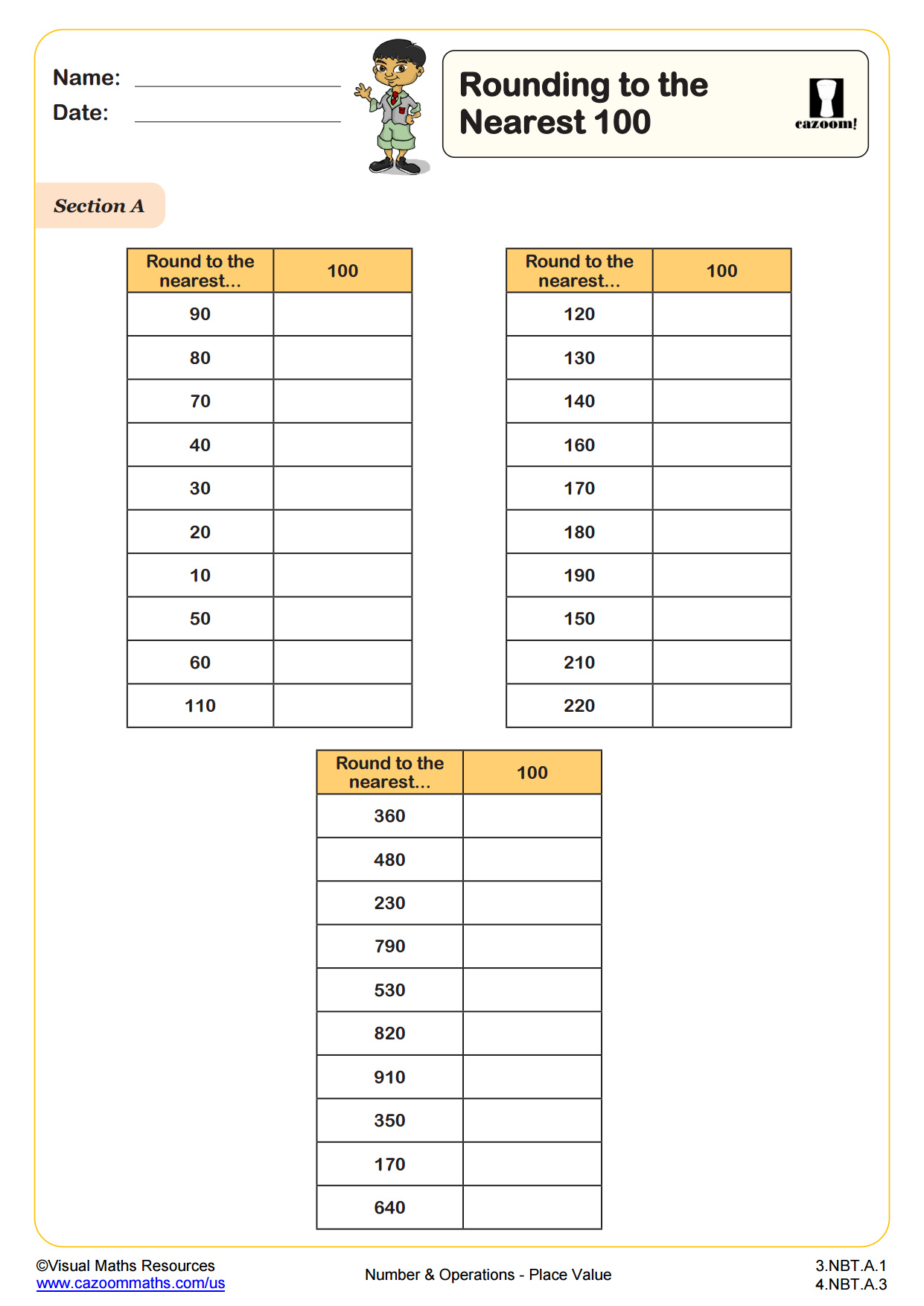
Rounding to the Nearest Multiple of 1,000
Grades: 3rd Grade, 4th Grade
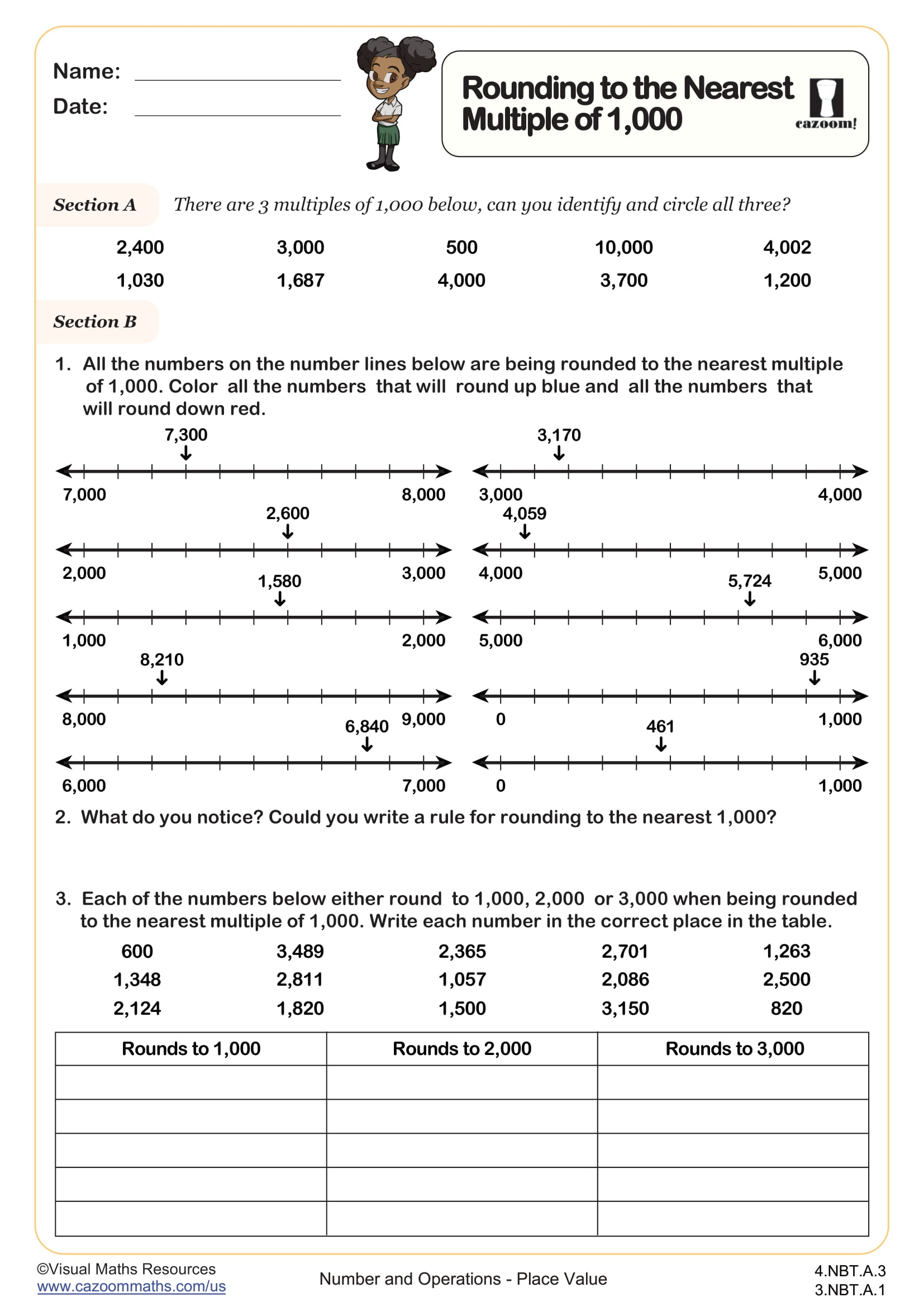
Rounding to the Nearest Ten
Grades: 3rd Grade, 4th Grade
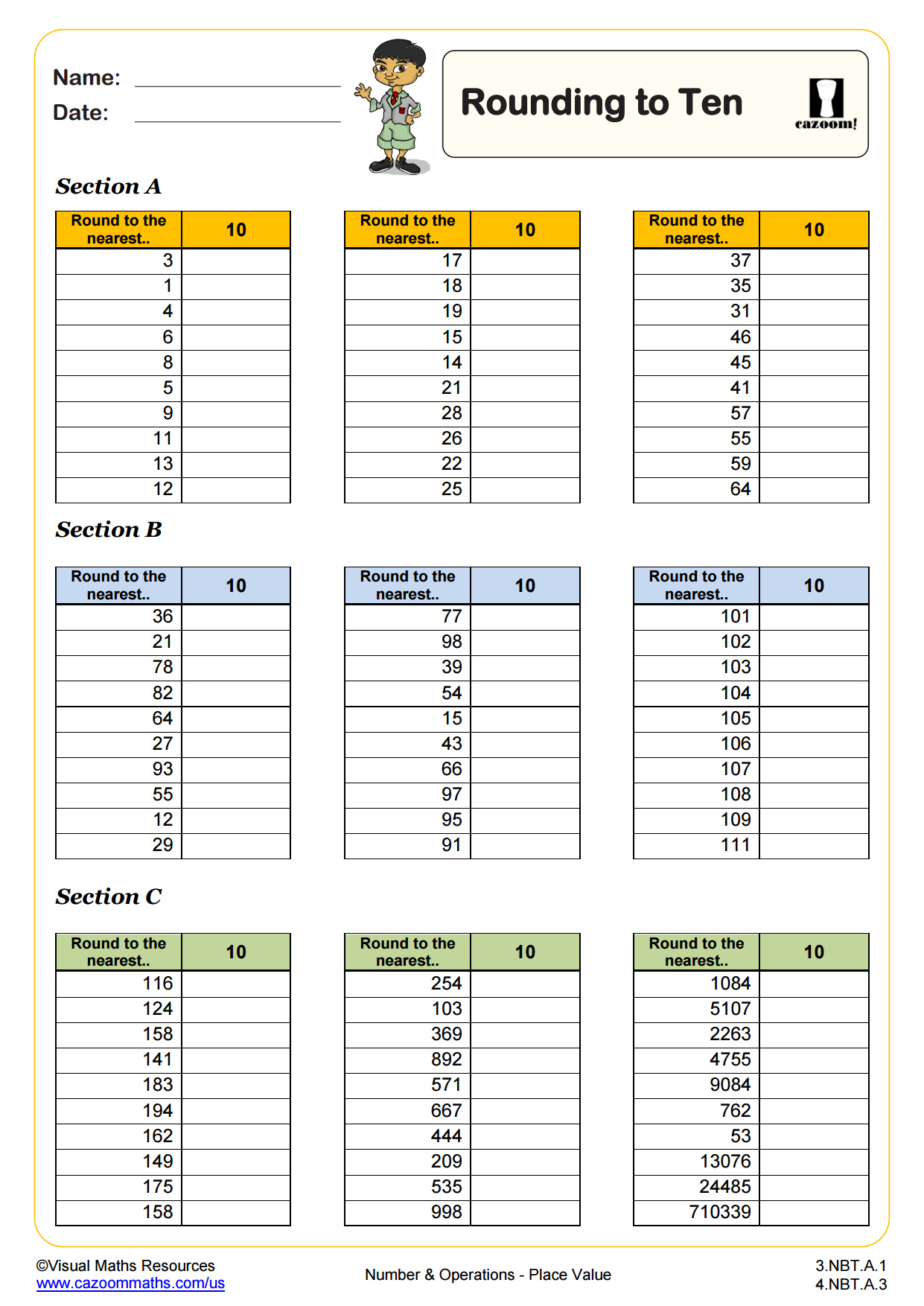
1000 More 1000 Less (A)
Grades: 4th Grade
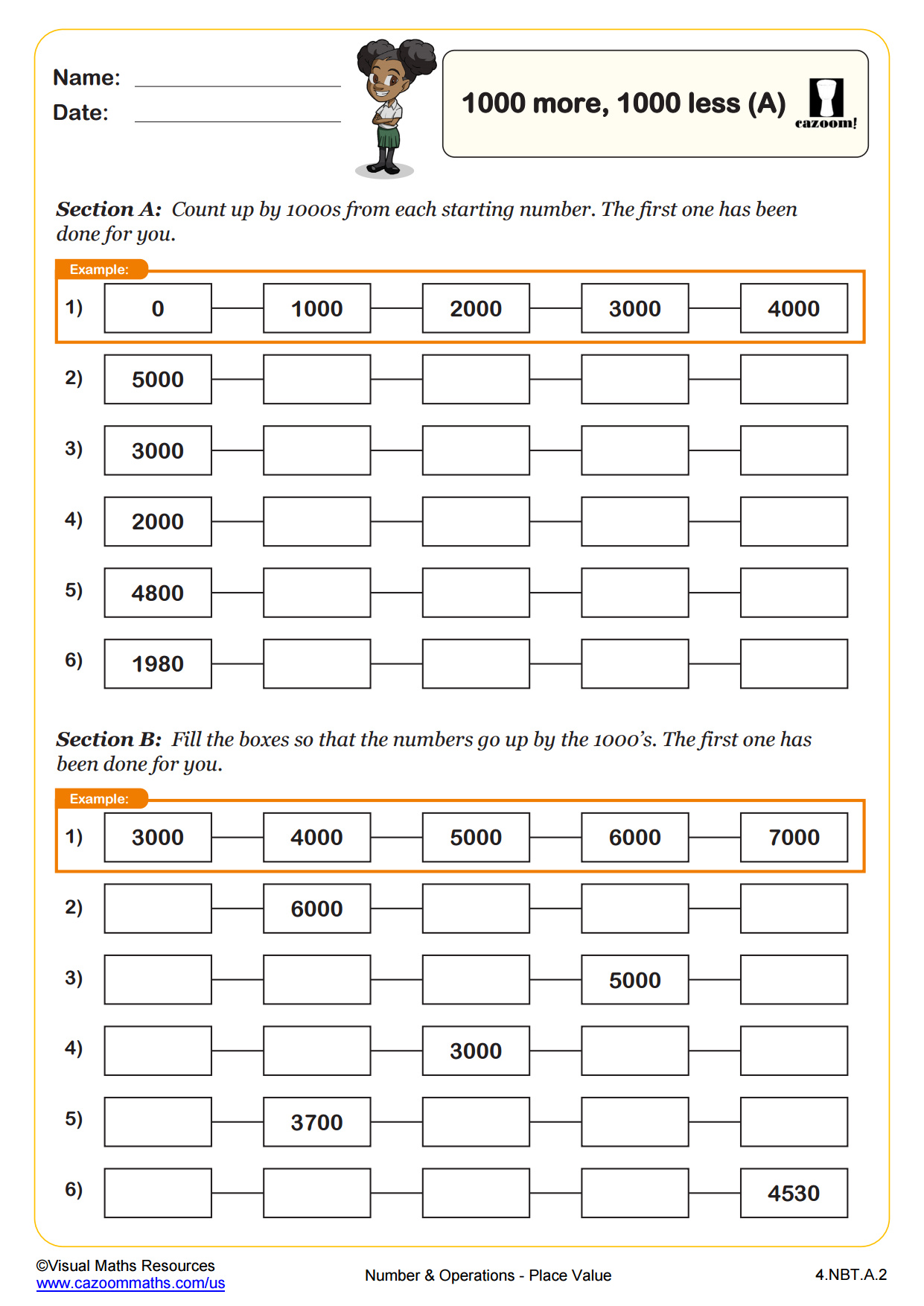
1000 More 1000 Less (B)
Grades: 4th Grade
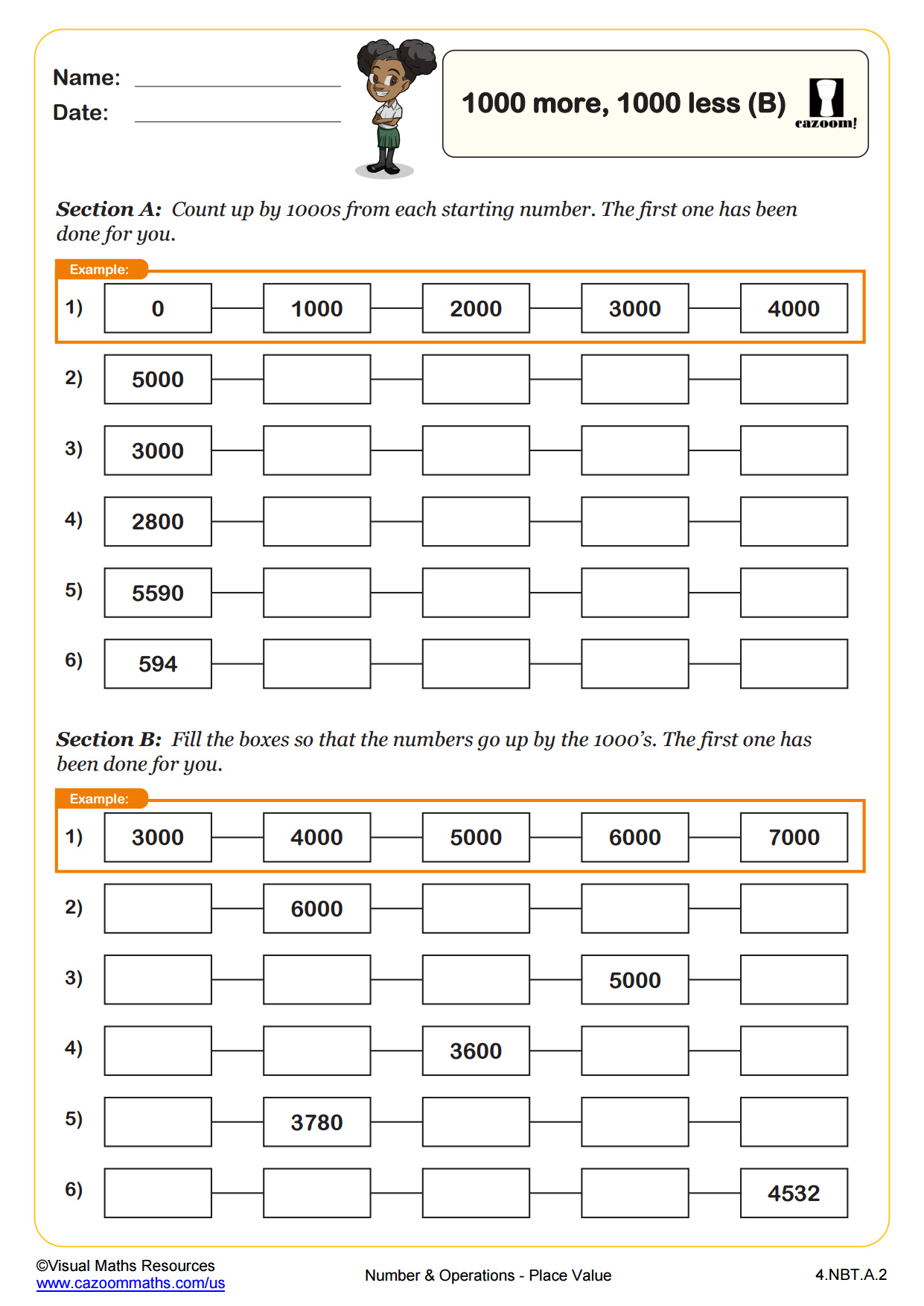
1000 More 1000 Less (C)
Grades: 4th Grade
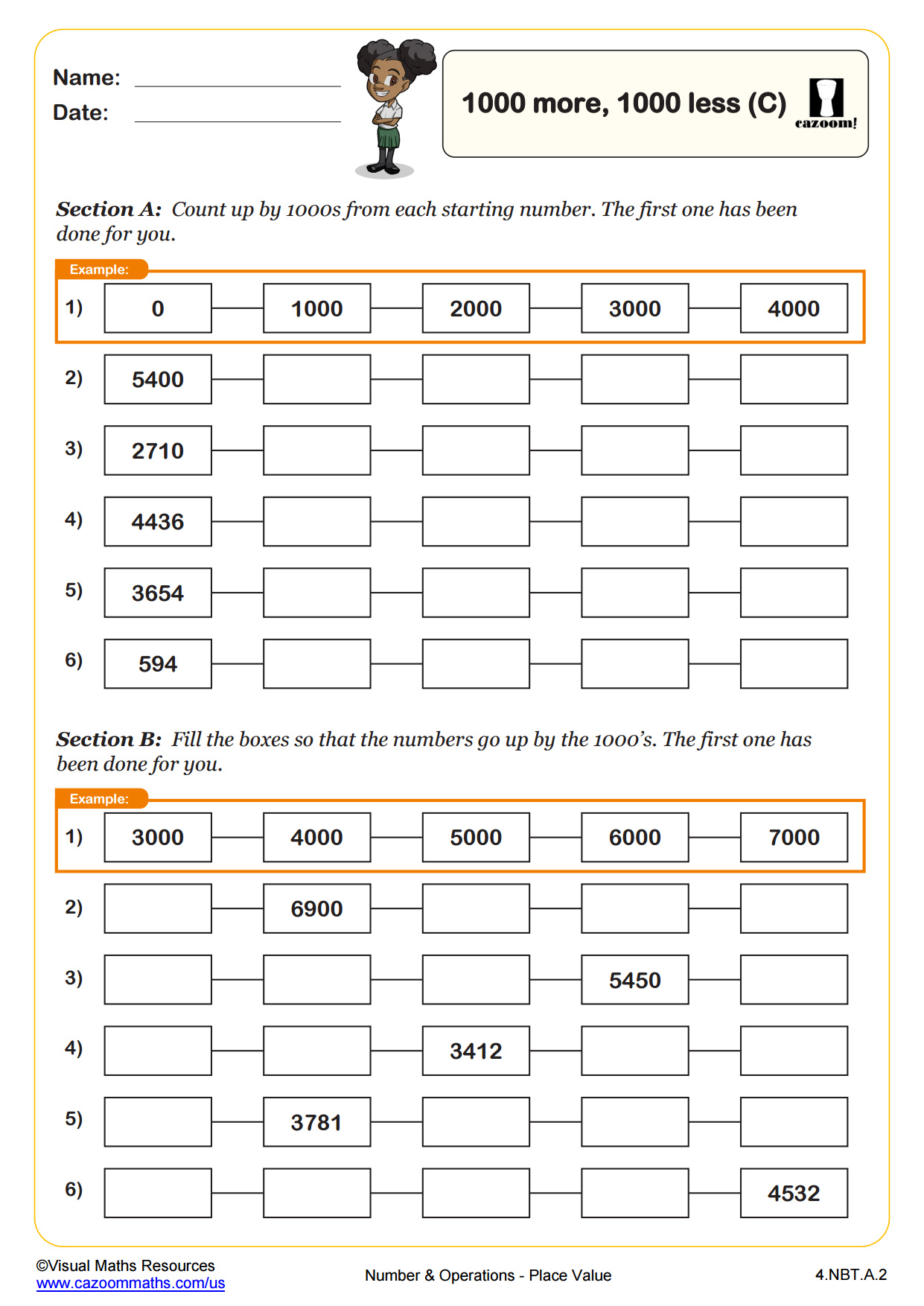
Compare and Order Numbers to 10,000
Grades: 4th Grade
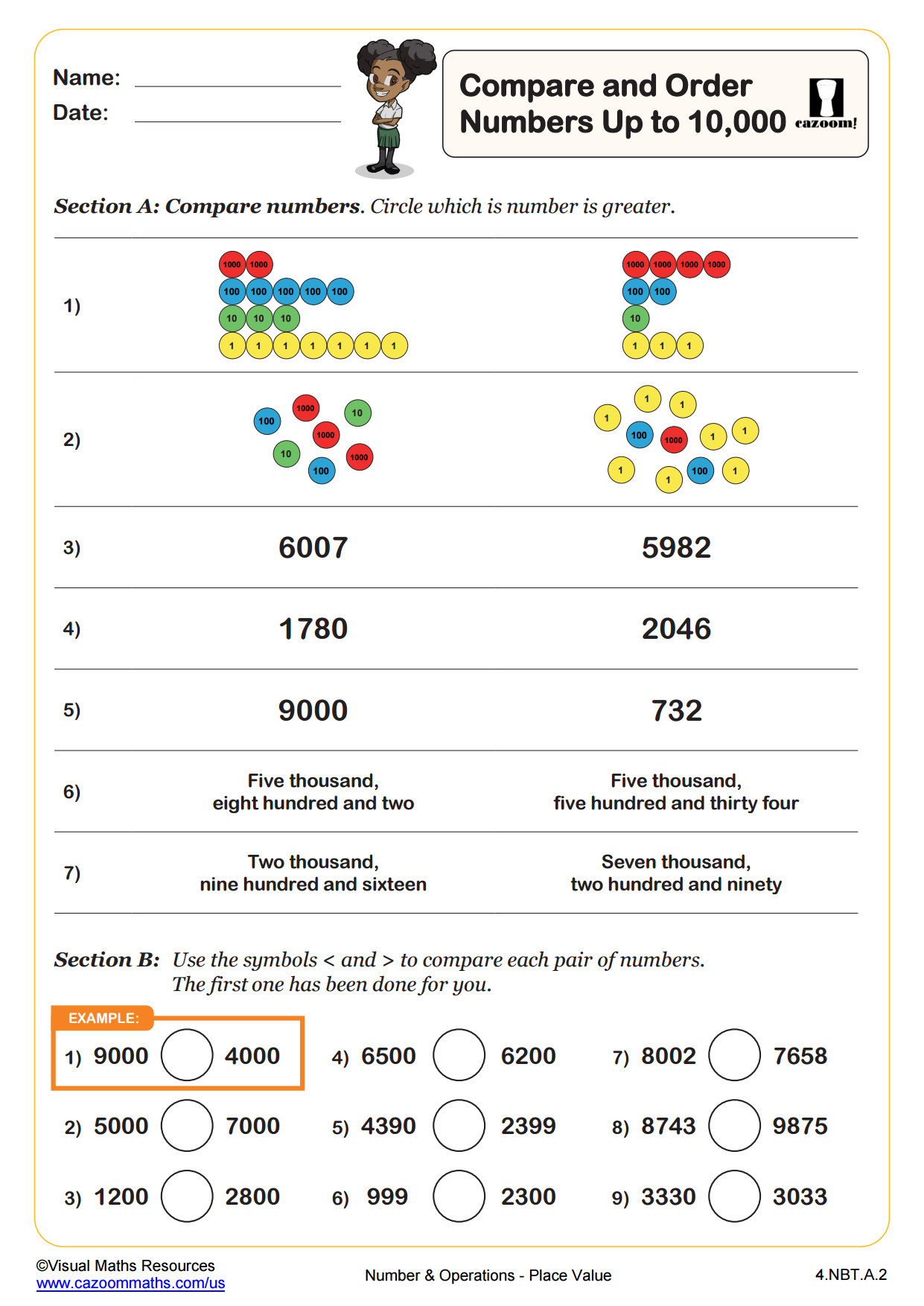
Numbers to 1,000,000
Grades: 4th Grade, 5th Grade
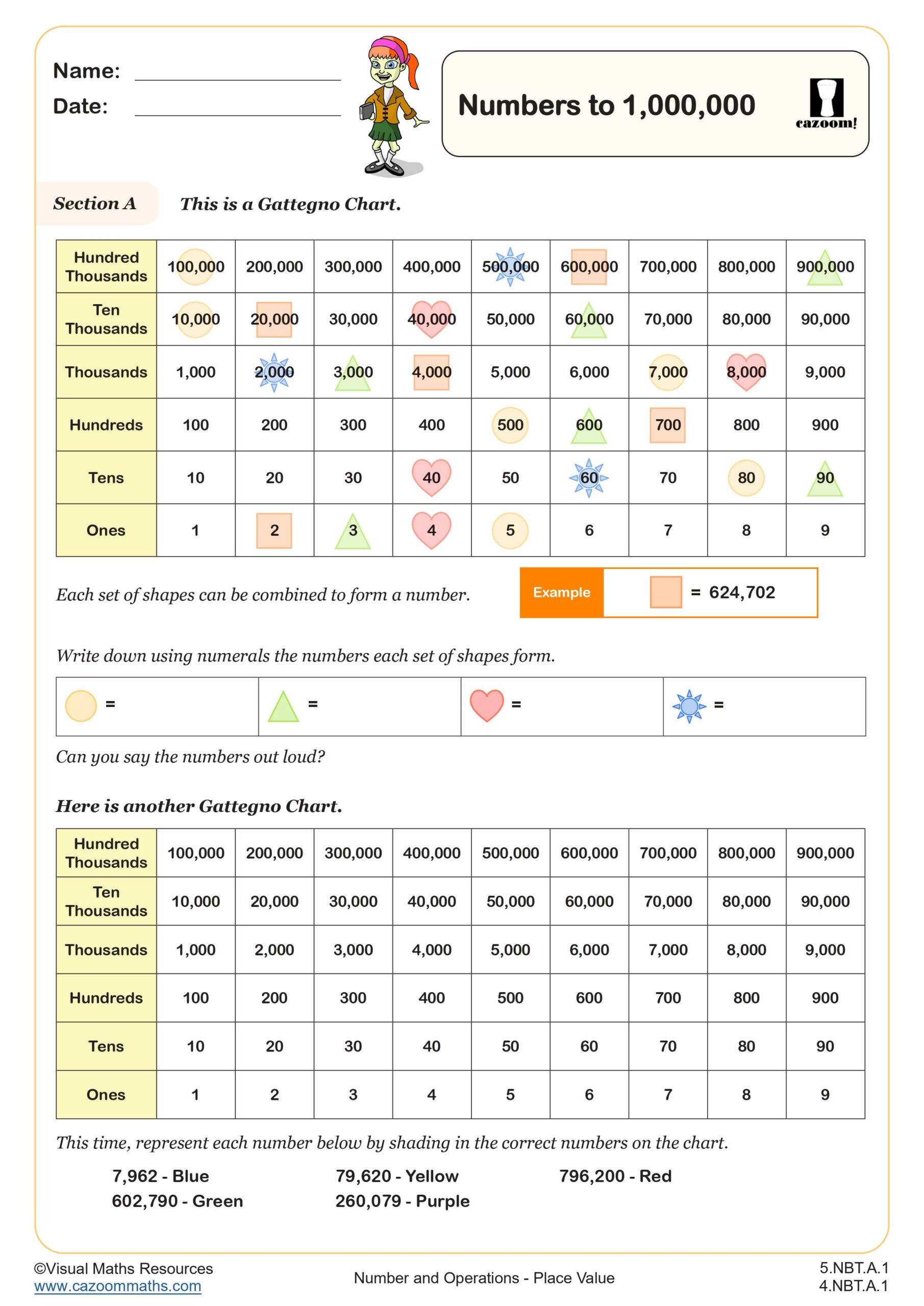
Partitioning Numbers to 1,000,000
Grades: 4th Grade
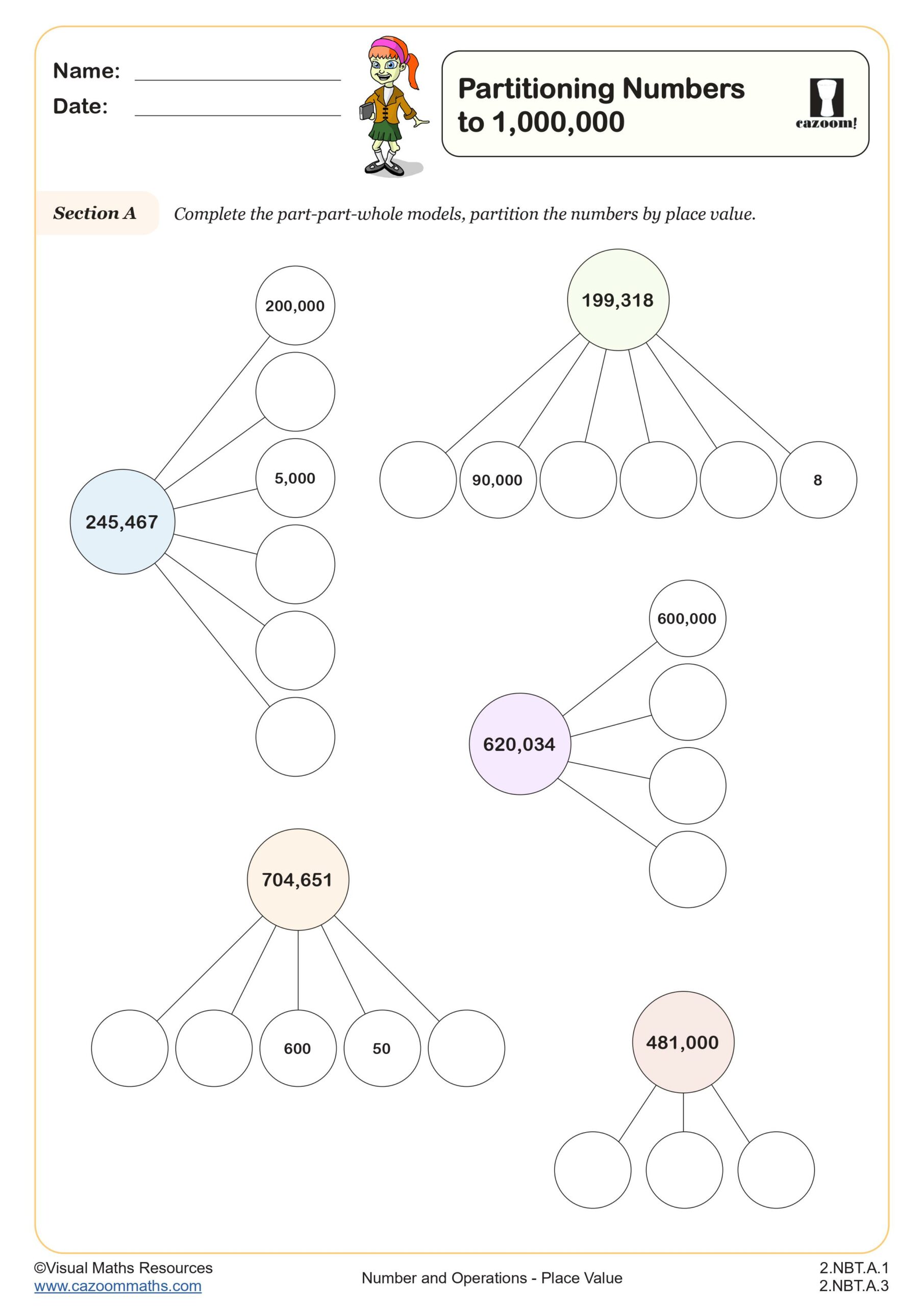
Place Value up to 10,000 (A)
Grades: 4th Grade
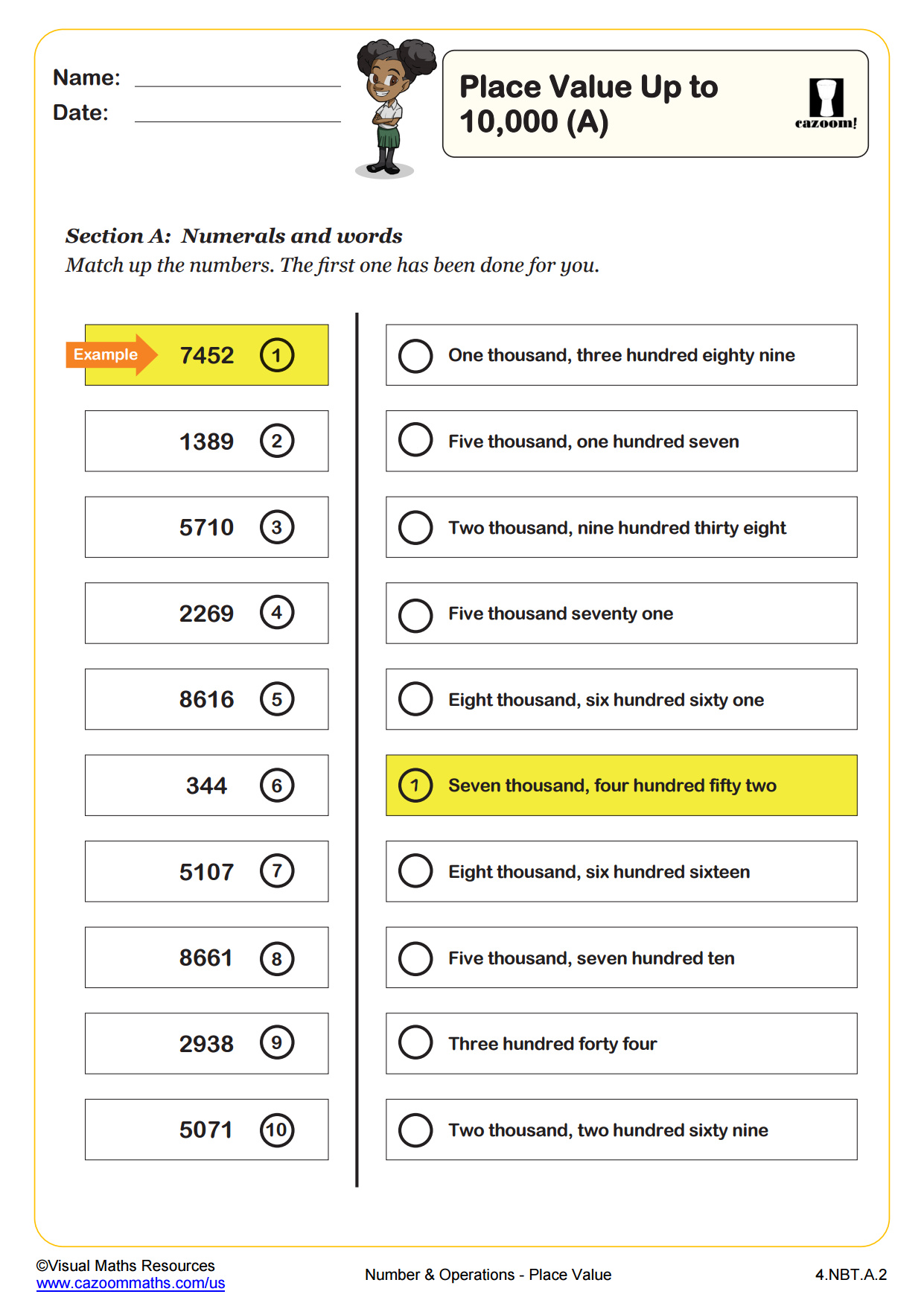
Place Value up to 10,000 (B)
Grades: 4th Grade
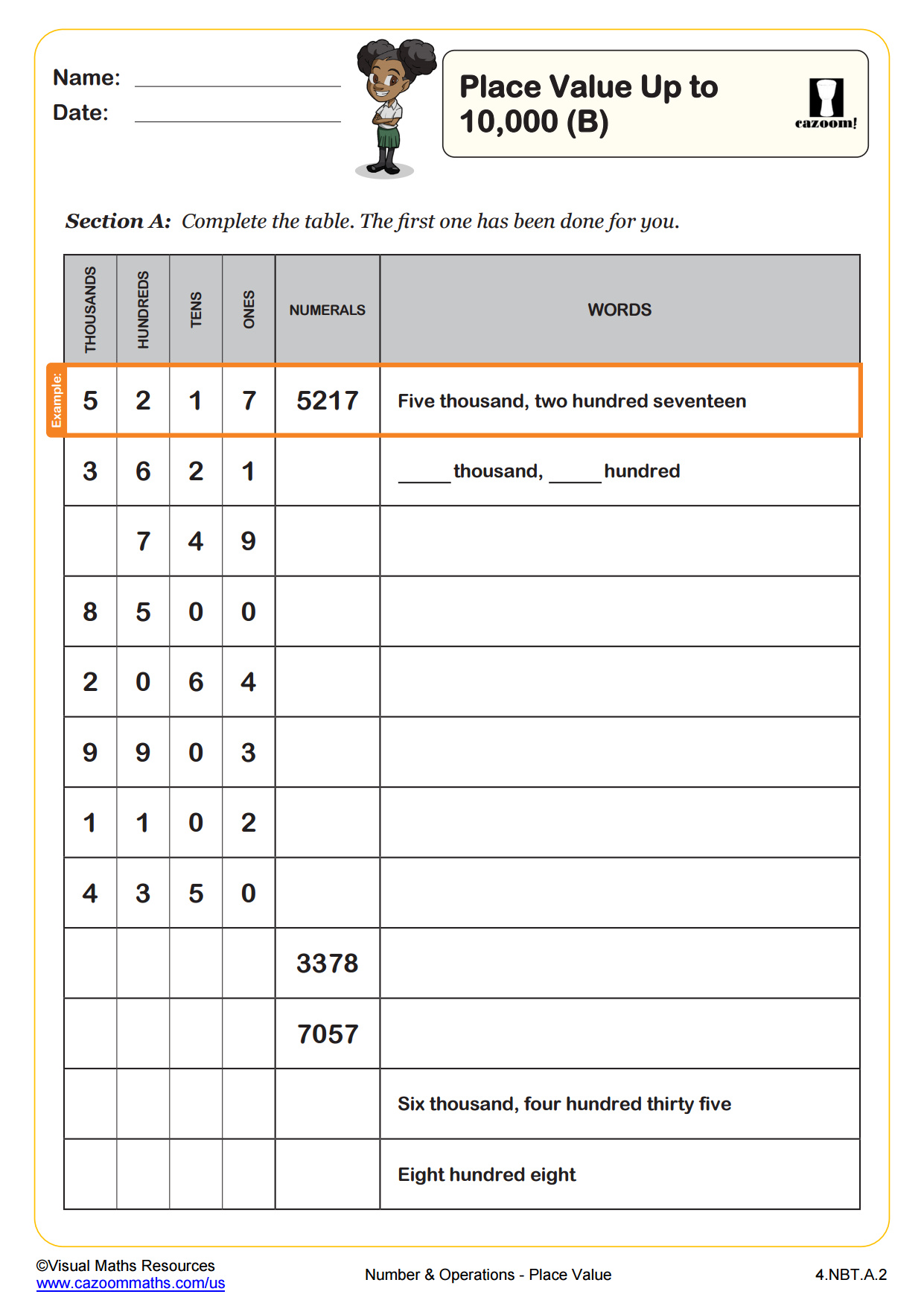
Place Value up to 10,000 (C)
Grades: 4th Grade
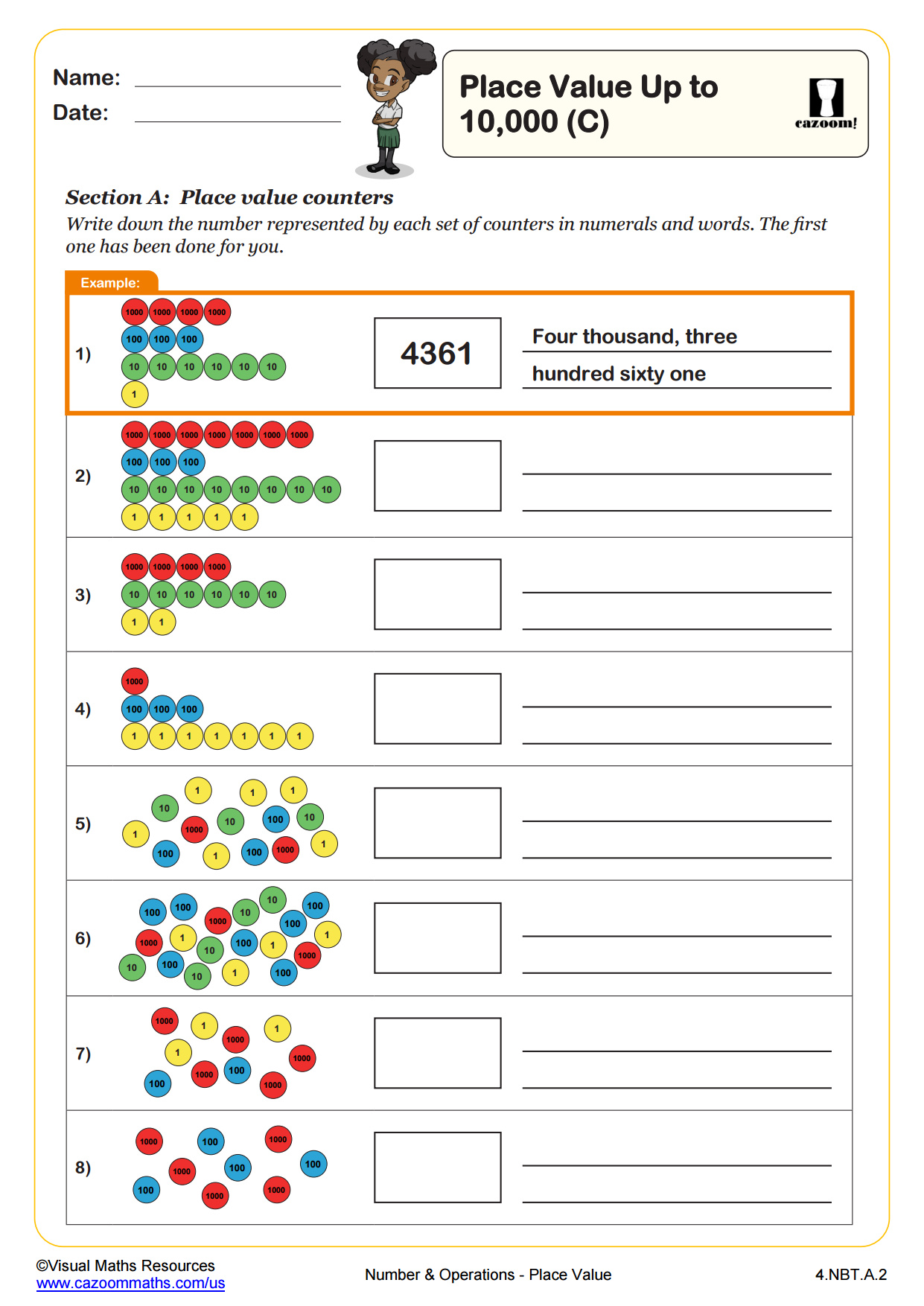
Place Value: Finding the Value of Digits
Grades: 4th Grade, 5th Grade
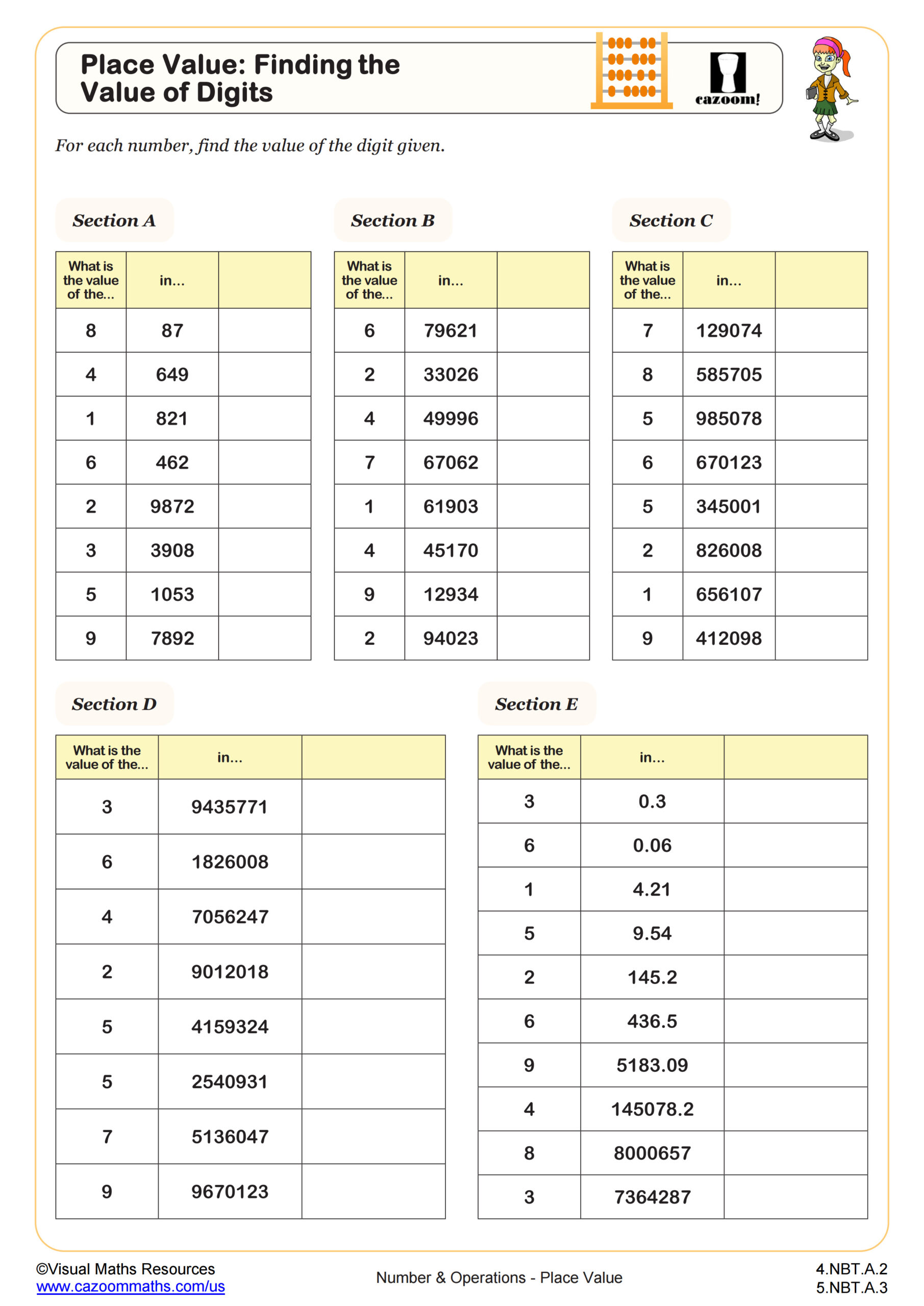
Place Value: Word Form to Standard Form (A)
Grades: 4th Grade
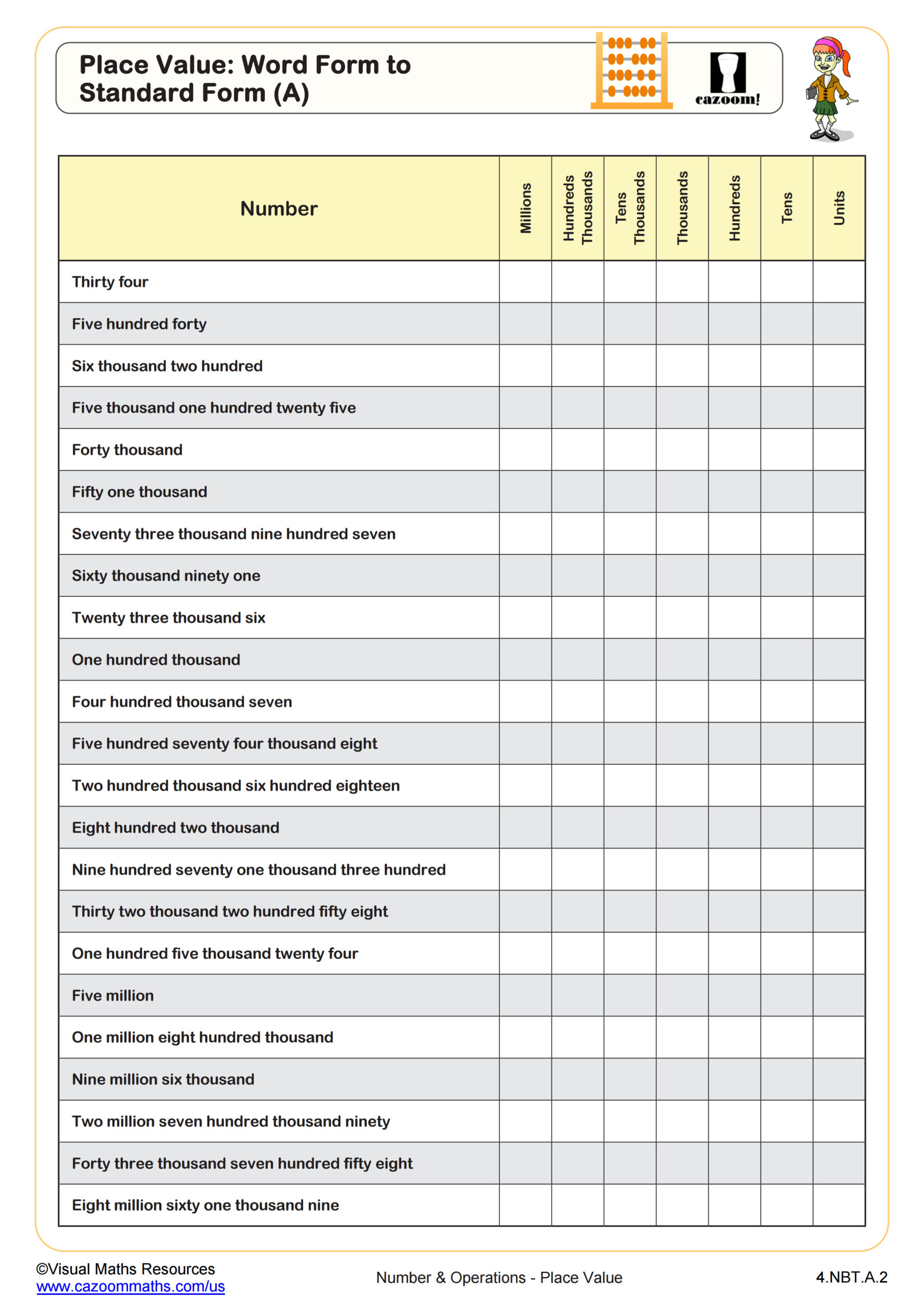
Place Value: Word Form to Standard Form (B)
Grades: 4th Grade
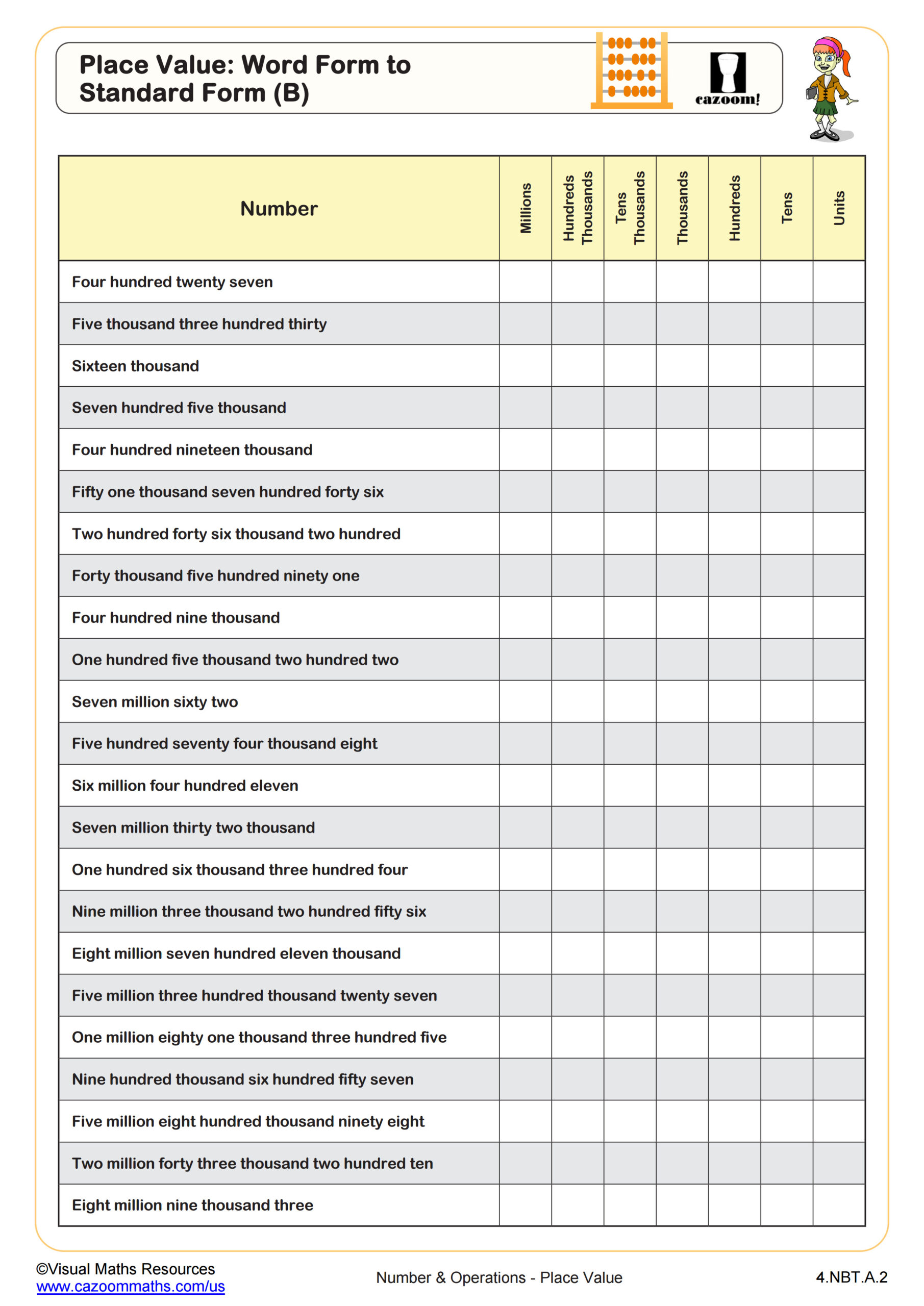
Use Place Value to Find More or Less
Grades: 4th Grade, 5th Grade
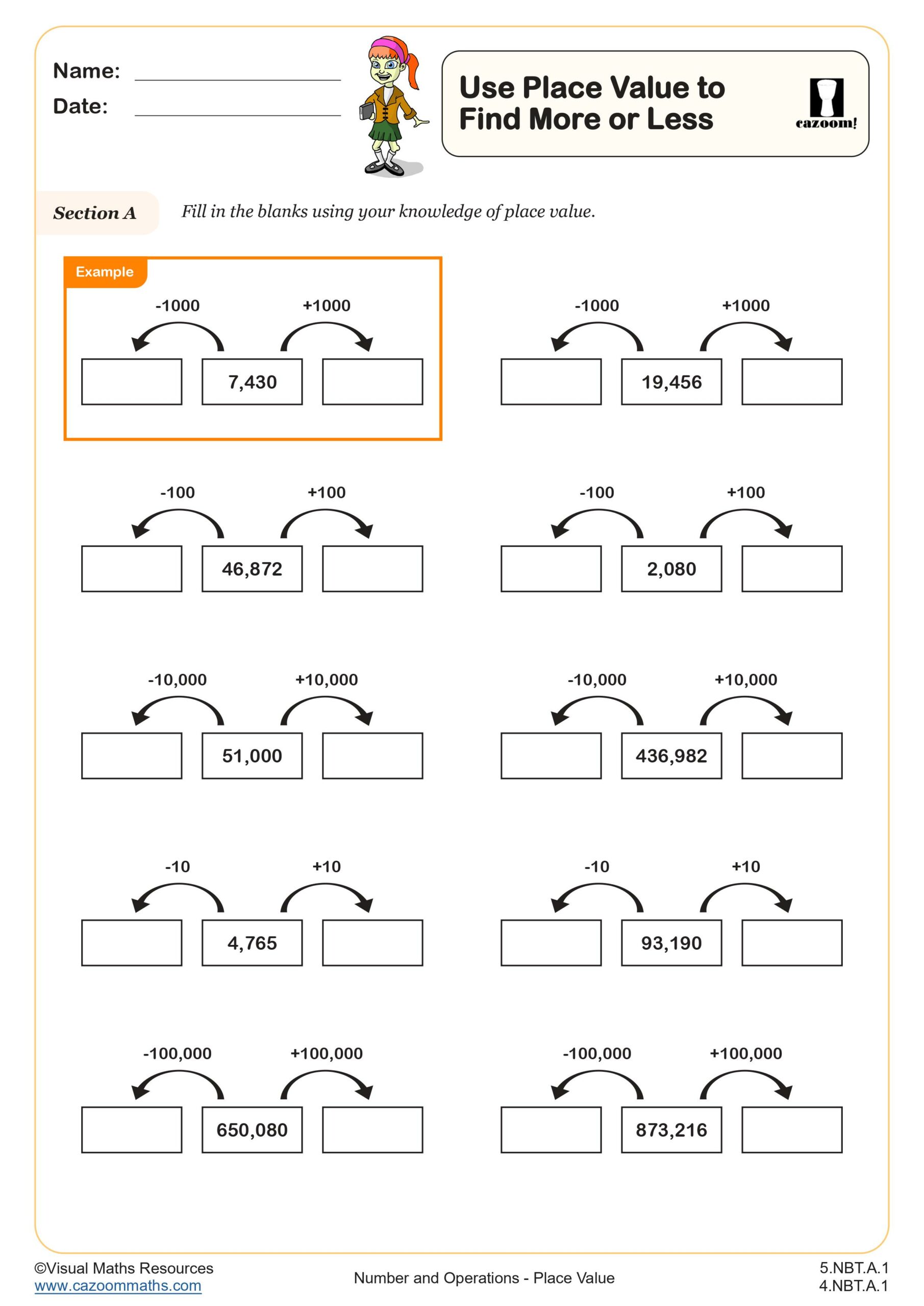
Rounding to the Nearest Whole Numbers (A)
Grades: 5th Grade
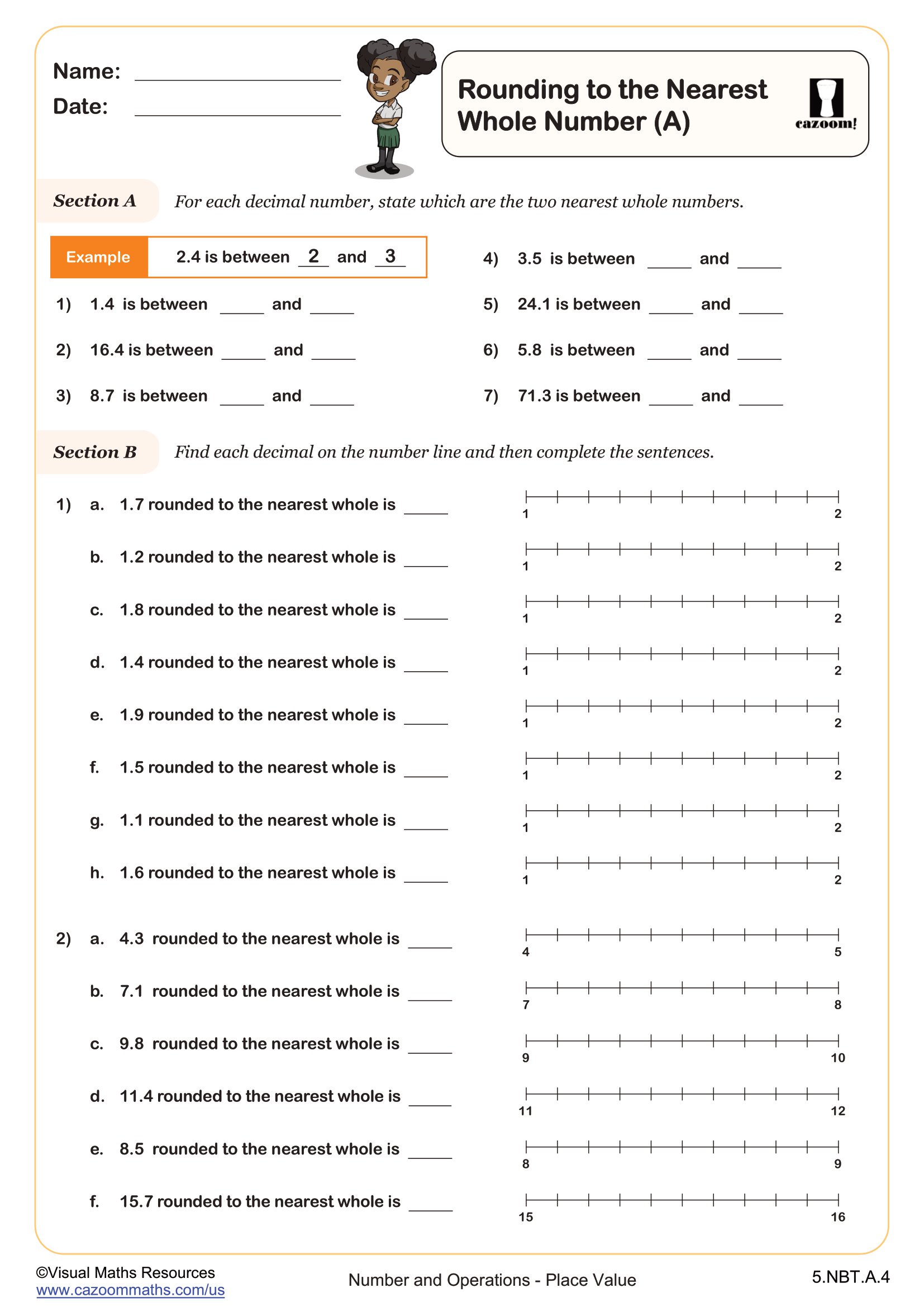
Rounding to the Tenth's Place
Grades: 5th Grade
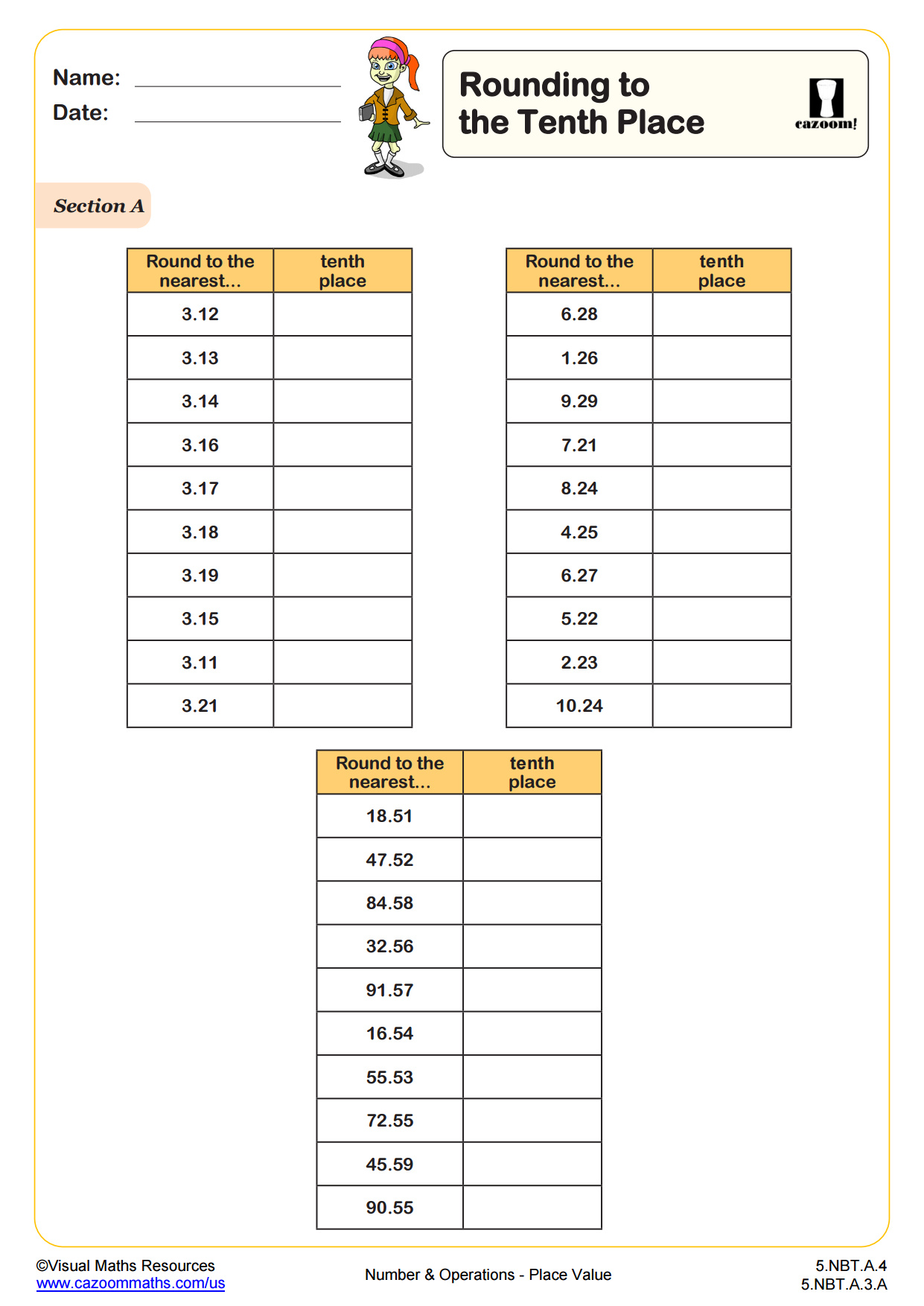
Rounding to Whole Numbers
Grades: 5th Grade
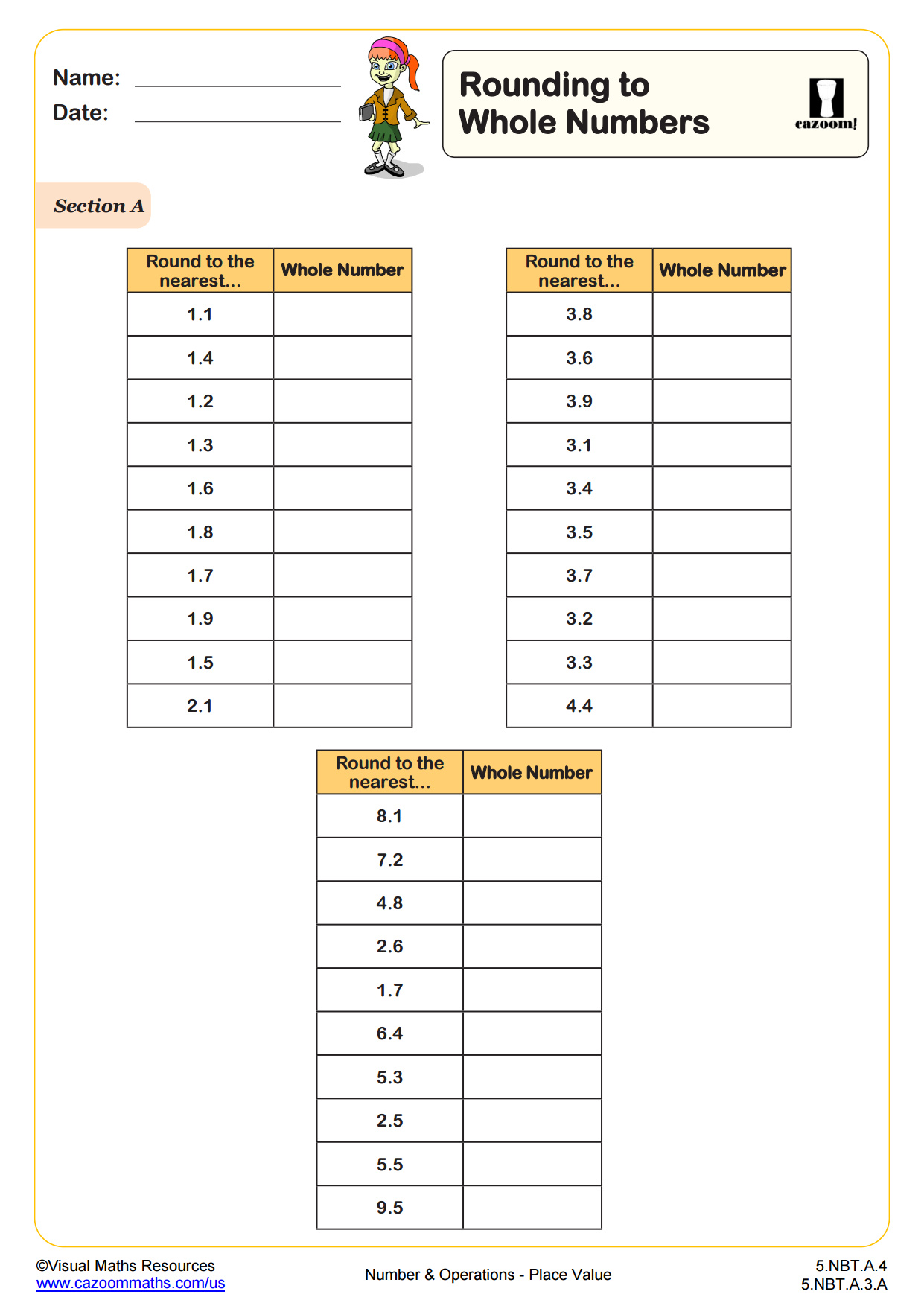
Compare and Order Positive and Negative Numbers
Grades: 6th Grade
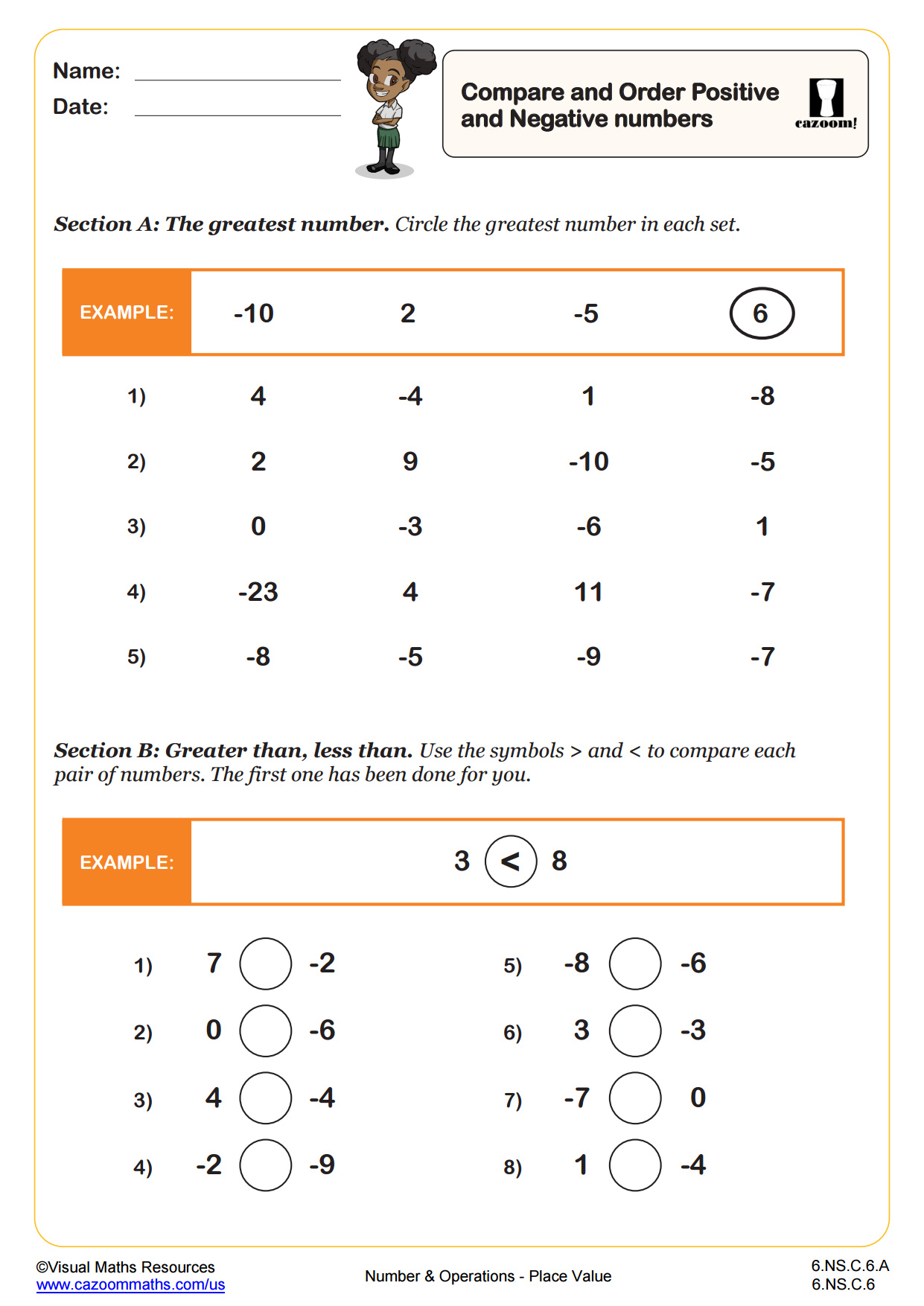
Printable Place Value Worksheets
All of our place value worksheets are in PDF format, meaning they can be easily downloaded and printed.
The resources available through Cazoom Maths introduce children to larger numbers in an entertaining and enjoyable way, and help boost their confidence with numbers. Our place value resources can be used throughout their primary and secondary education: we have worksheets to help children convert words to digits, activities which introduce the place value of decimals, and more place value questions to download.
Explanation of Place Value
Place value helps a child distinguish between their $10 pocket money and the $100 toy they spotted in a shop.
Understanding place value is a valuable skill for children to learn, and it is one which they will need throughout their education. It is a system by which we can understand what a number means, enabling us to perform addition, subtraction, multiplication and division. Students who have only a basic grasp on place value often struggle to perform sums with multi digit numbers, which can knock their confidence in math. Place value is one of the most fundamental elements of the math curriculum; it is the foundation for learning about decimals, multiple digit multiplication, and standard form notation. Knowing how place value works reduces the likelihood of students making errors in math questions, especially when they are dealing with larger numbers.
The Importance of Learning About Place Value
Learning about place value helps children understand how to name numbers.
Although cheques are less common now, on a cheque it is necessary to write out the full name for a number to ensure that the correct amount of money is paid, and it is knowledge of place value which will enable someone to do this. Our worksheets provide a way for children to practice using digits and words to represent numbers, and master this important skill which they will use for life.
What is place value?
In math, all digit numbers have a place value. It can be defined as a value represented by a digit in a number on the basis of their position.
Example: Define the value of all digit numbers in 3,567.
• The 3 represents three thousand or 3,000.
• The 5 represents five hundred, or 500.
• The 6 represents six tens, or 60.
• The 7 represents seven ones.
It is easy to define digit place value once you understand the value of each position in a number. The easiest way to learn the digit place value is through a place value grid:
What is expanded form?
In expanded form we break up the number according to their place value and extend it to show the value of each digit.
Example: The expanded form od 1,475 is: 1,000 + 400 + 70 + 5
What is expanded form?
In expanded form we break up the number according to their place value and extend it to show the value of each digit.
Example: The expanded form od 1,475 is: 1,000 + 400 + 70 + 5